Located on the Rāvi River in the upper Indus plain in northeastern Pakistan is the city of Lahore. The capital of the Punjab Province and the country’s second-largest city, Lahore is considered the historical and cultural center in the Punjab region. It’s also well-known for its cuisine, all of which makes the top things to do in Lahore a long and varied list.
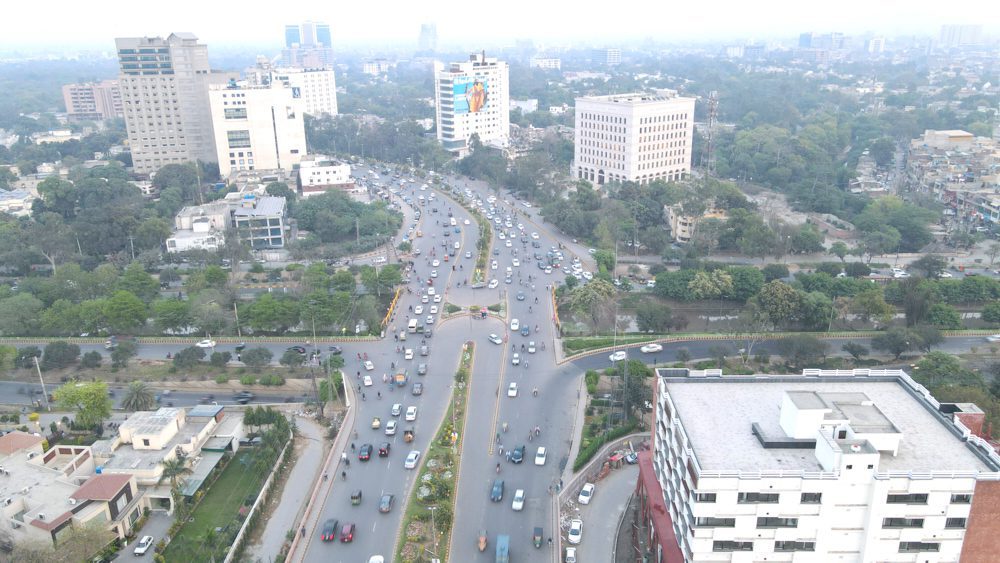
The interesting history of the city dates back to ancient times. By the Middle Ages, it had been controlled by the Hindu Shahis, Ghaznavids, Ghurids, and Delhi Sultanate. That was followed by the Mughal Empire from the 16th to 18th centuries and the Sikh Empire in the early 19th century. It then became the capital of British Punjab during the British Raj and later was instrumental in the independence of both India and Pakistan.

The city is a cultural haven and is known for being one of the country’s more socially liberal, progressive, and cosmopolitan cities. During my time there, I had the pleasure of visiting several attractions, including the Walled City, Lahore Fort, Wazir Khan Mosque, and more.
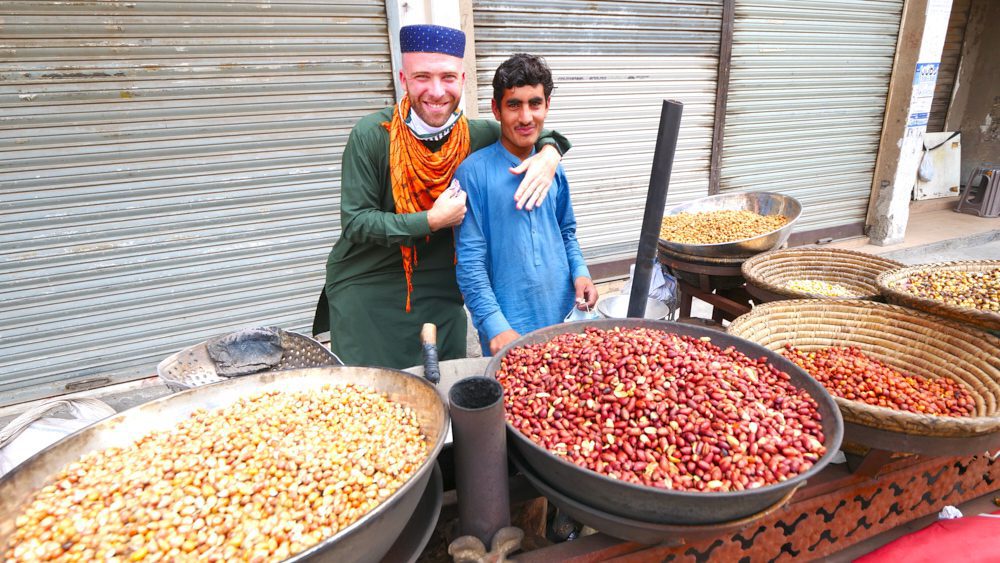
But, besides the incredibly kind people, the main highlight for me was the food, which blew me away. It’s so varied and has lots of different influences, which makes each bite an adventure. Between the food, people, and history, let’s just say I was in heaven there. These are the 25 things you must do and eat in Lahore, Pakistan.
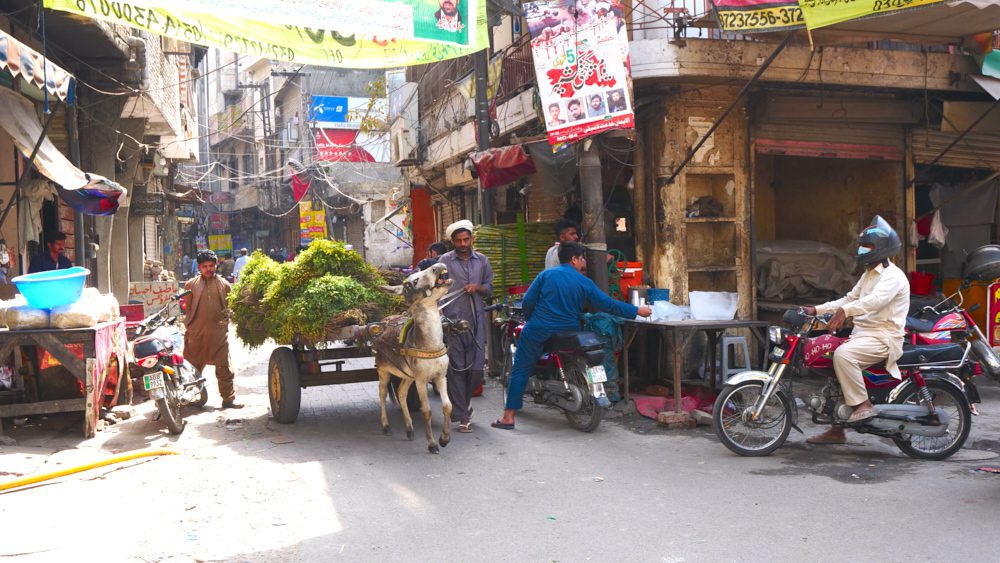
When I say that Lahore is one of the best and most underrated food cities in the world, I mean it. Incredible street food is everywhere in this bustling metropolis. You could spend months there and still just barely scratch the surface. On my first day in the city, my guides Rashid and Adeel took me to one of their favorite street food hotspots, New Anarkali Bazar.
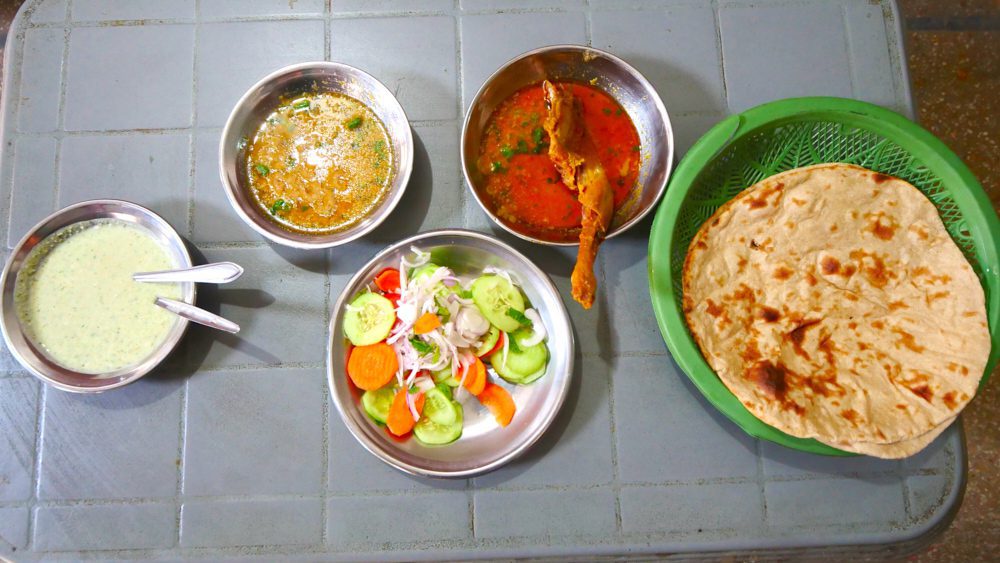
There, you’ll see cooks in small, open-air, hole-in-the-wall restaurants preparing everything from roti to dal. Rashid and Adeel took me to a small, unassuming spot for chana dal, Desi chicken dal, chapati, raita, and some salad.

I loved the light and spicy chana dal and the tasty, ghee-rich chicken dal. Adding raita added a minty flavor and creamy consistency to the dishes, and the salad served as a crisp, fresh palate cleanser!

Lahore may be very much a foodie city, but that doesn’t mean it doesn’t have anything else to offer. One of the top historical buildings sites in the city is the Jahangir Tomb Complex, located in the historic Shahdara Bagh precinct northwest of the Walled City. It’s named after the fourth Mughal emperor Nur-ud-din Muhammad Salim, better known as Jahangir.

The complex is made up of three historically rich sites: the Tomb of Jahangir, Akbari Sarai, and the Tomb of Asif Khan. It’s famous for its red sandstone walls, ornate frescoes, marble elements, fountains, water channels, and the colorful, inlaid stonework technique called pietra dura.

Emperor Jahangir ruled the Mughal Empire from 1605 to 1627. His son, Emperor Shah Jahan, ordered the construction of a grand tomb for his father. He would later also commission the construction of India’s most famous tomb, the Taj Mahal. The mausoleum was completed in 1637.
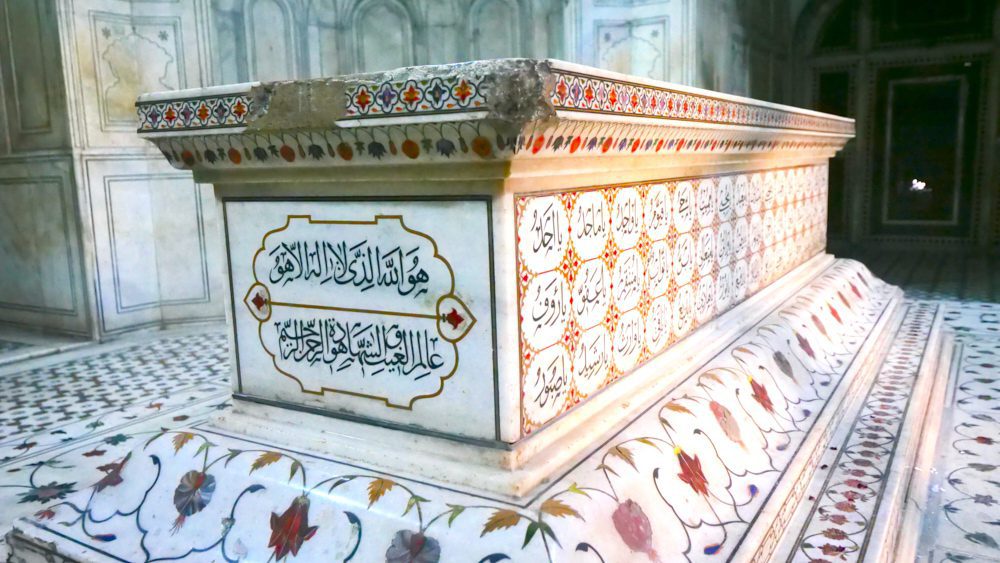
Its exterior walls are made of red sandstone imported from the state of Rajasthan. The pietra dura is quite intricate and features images of flowers and other geometric designs. Of course, the centerpiece is the marble casket inside, which is adorned with verses from the Koran.
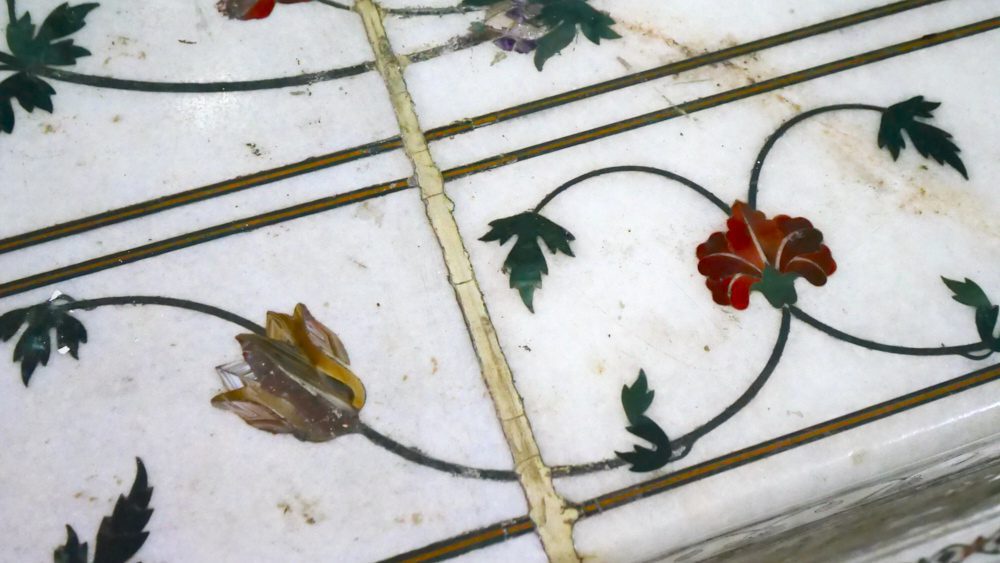
Mughal architecture is always spectacular, and Jahangir’s Tomb is no exception. One of the best spots to enjoy a stunning view of the entire complex is the rooftop. There, you can see the four minarets at each of the building’s corners, as well as the gardens and fountains below!

Akbari Sarai, is a series of tombs and a caravan inn, also known as a sarai. Also built in 1637, it housed travelers and the caretakers of Jahangir’s Tomb. It’s the best-preserved sarai in the country and contains several hundred rooms and four gardens!

Elsewhere on the site is the Tomb of Asif Khan, Jahangir’s brother-in-law. The tomb was built between 1641 and 1645. Built with brick, it initially had a marble and sandstone veneer, but was damaged and plundered by Sikhs during the 19th century.
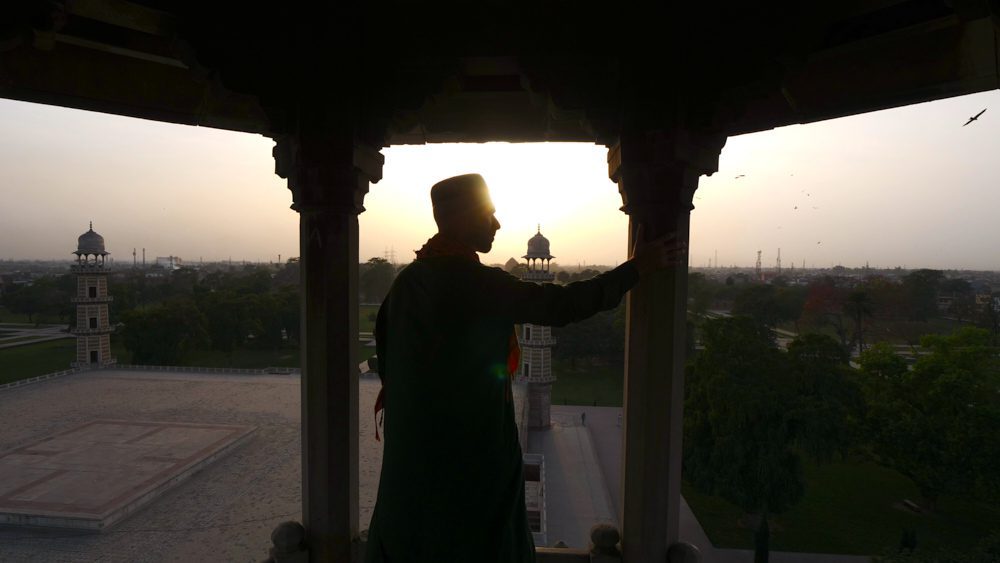
It will only set you back 500 rupees/$3 USD to visit the complex. That alone makes it one of the top things you must do in Lahore, Pakistan!

Arguably the most iconic section of the city, no trip to Lahore is complete without exploring its walled city. The oldest part of town or old city, the Walled City, can be accessed through the Delhi Gate market, which faces the city of the same name in India.
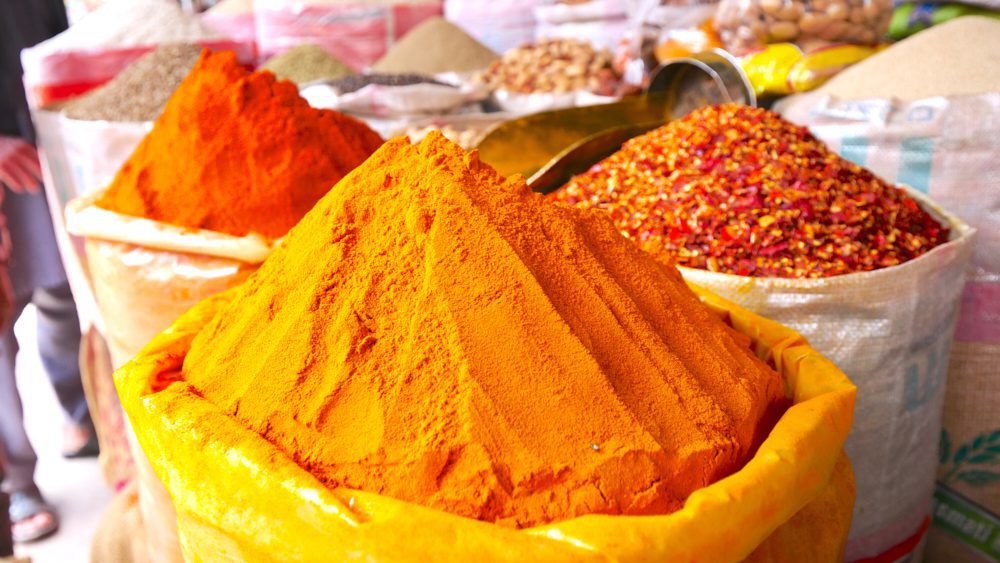
Through the gate are an endless sea of vendors and businesses operating out of two- and three-story buildings. It reminded me a lot of my time exploring the medinas in Morocco, especially when I reached the spice bazaar.

This bazaar was built by Akbar the Great, the third Mughal Emperor. He began the spice trade between Lahore, Delhi, and the city formerly known as Calcutta. There, you can see vendors selling everything from chilies to black pepper to dozens of varieties of rice!

Also inside the walled city is Shahi Hammam, also known as the Wazir Kahn Hammam. These royal baths are one of the oldest bathhouses on the Indian Subcontinent. They were built by Emperor Shah Jahan and are now a UNESCO World Heritage Site. It’s made up of red sandstone, which serves as a type of insulation.

Inside the bathhouse are nine rooms. One of them is covered in plaster, a remnant of a failed British plot to convert the hammam into a church. There were once 21 rooms, but many of them have since been destroyed.
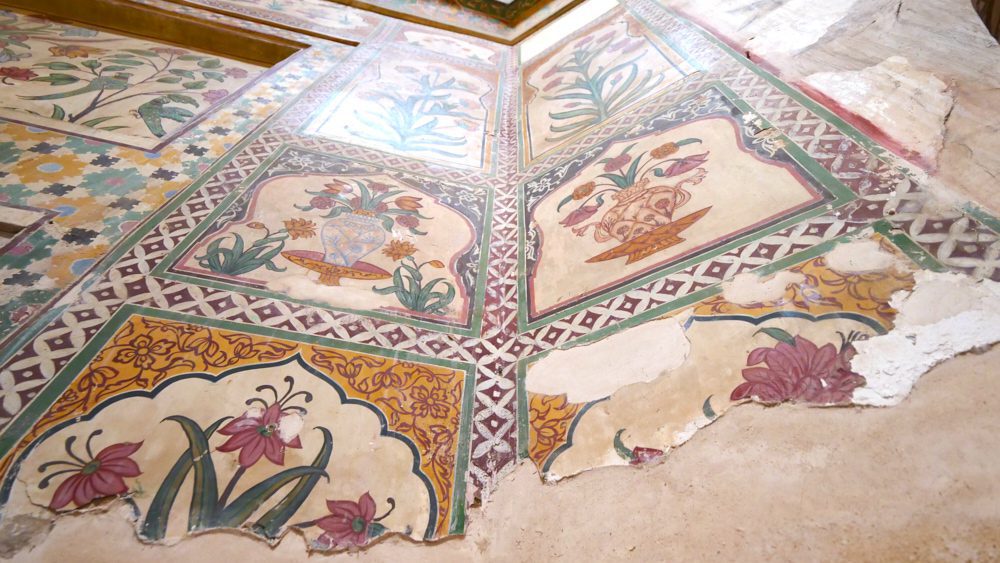
The rooms are adorned with beautiful frescoes, and other rooms have waterfalls that serve as showers. There’s also a sauna with marble floors!

Back outside, you’ll pass lots of fabric shops along the main street. Past them is a vendor who sells delicious qeema patties with egg, spices, vegetables, chilies, ghee, and naan.
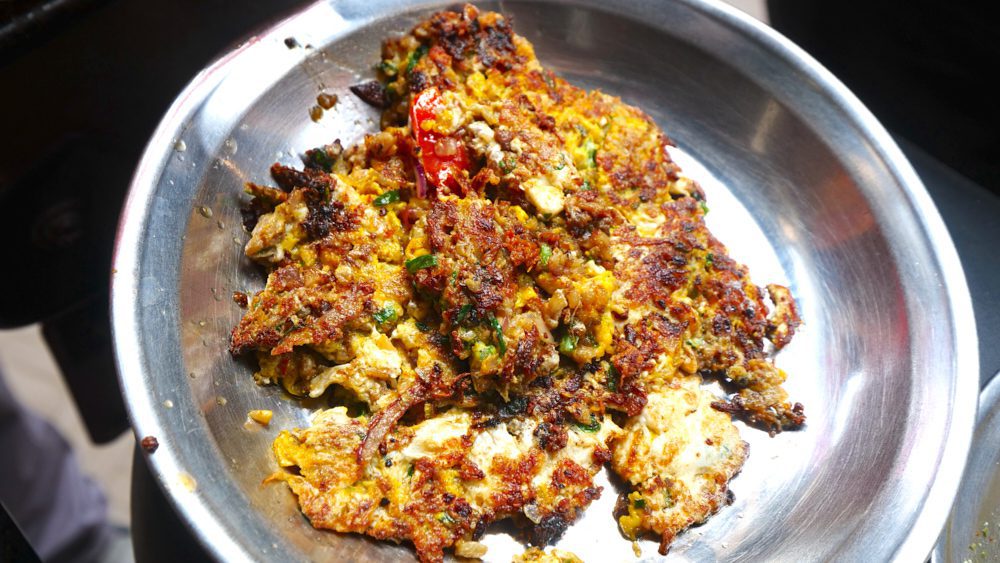
This fantastic meat-and-egg dish was beautiful. I couldn’t get over the mouthwatering spices, the heat from the chilies and the fresh vegetables! If you need something to cool your mouth down afterward, continue on to one of the kulfi or orange juice vendors further down the street!
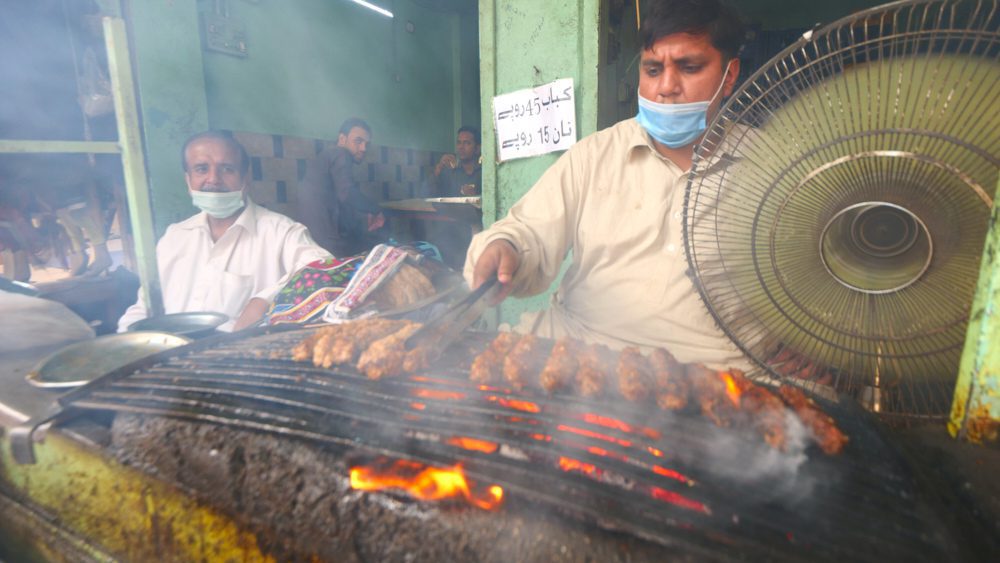
Elsewhere, Rashid, Adeel, and I came across a friendly vendor selling beef kebabs with naan and a sweet and spicy apricot and onion chutney. The meat was perfectly cooked: slightly charred on the outside but still soft and juicy on the inside.
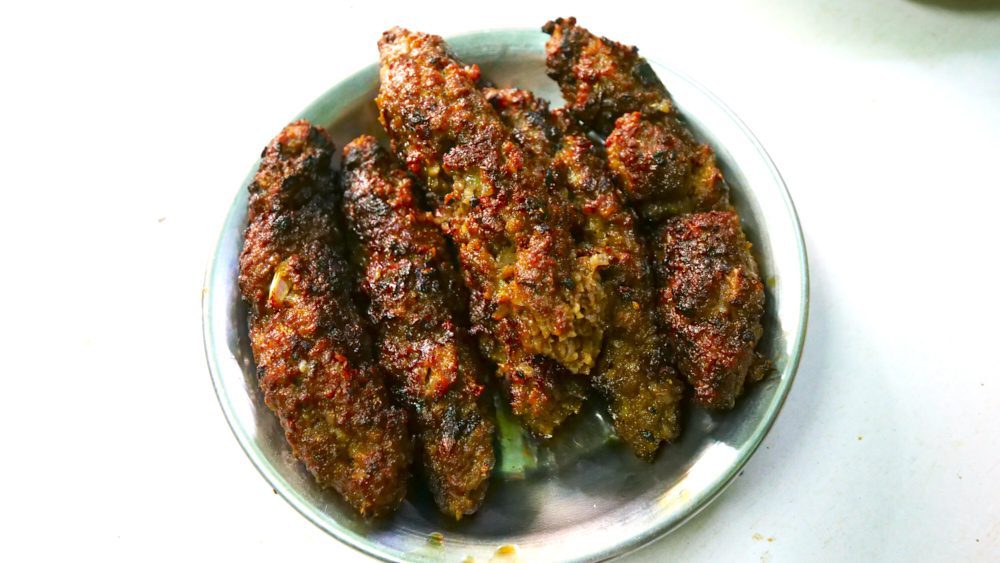
The combination of the chewy naan and tender beef is something I could have eaten all day. I love savory-and-sweet combinations, and this one was a game-changer for me. It was good enough to drink by itself!
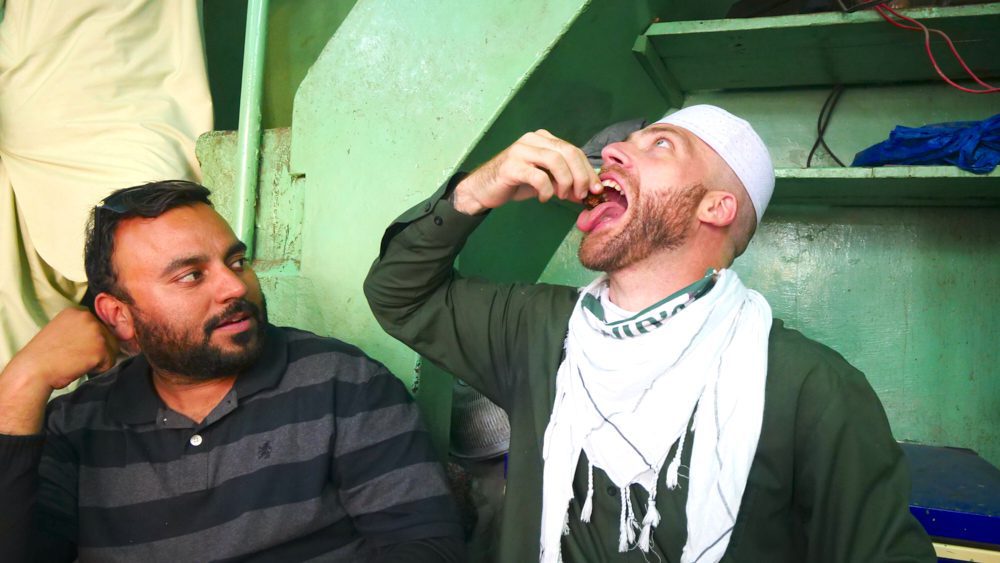
I especially loved the acidity that the onions brought to the sweet chutney! It was easily one of the best meat dishes I ate in Lahore. And it was also the best way to end my time exploring the Walled City of Lahore. Trying it is one of my favorite things to do in Lahore, Pakistan!
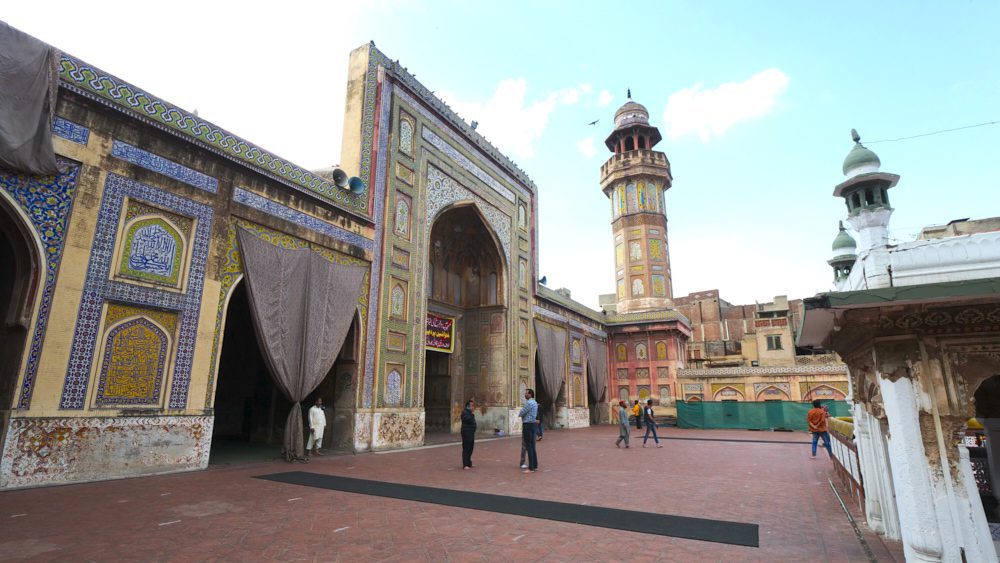
Further on down the main street is Wazir Khan Mosque, a Mughal-era building dating back to 1634. Like many of the historical sites in Lahore, it reminded me a lot of mosques I’d seen in Uzbekistan, with its colorful, intricate facade.
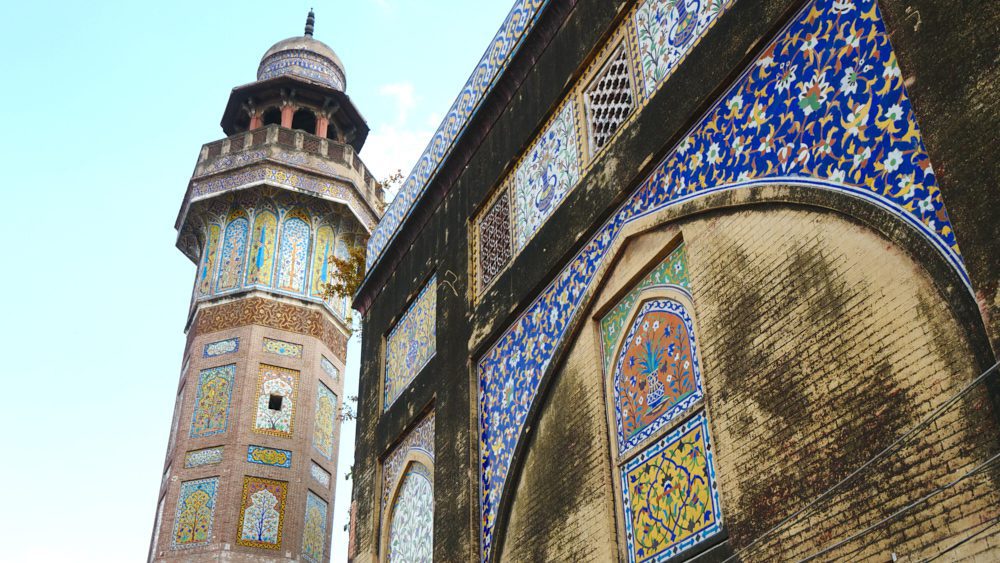
The outside is adorned with Persian calligraphy, painted mosaics, and floral patterns. When you go inside—take off your shoes first—you’ll find a courtyard, four minarets, five domes, and five arches. I learned that the domes represent the Islamic vault of heaven. The arches, meanwhile, represent the five prayers made per day.

The courtyard is stunningly beautiful. There, you can really admire the painstaking work that went into creating the mosaics and frescoes. They’re so colorful!
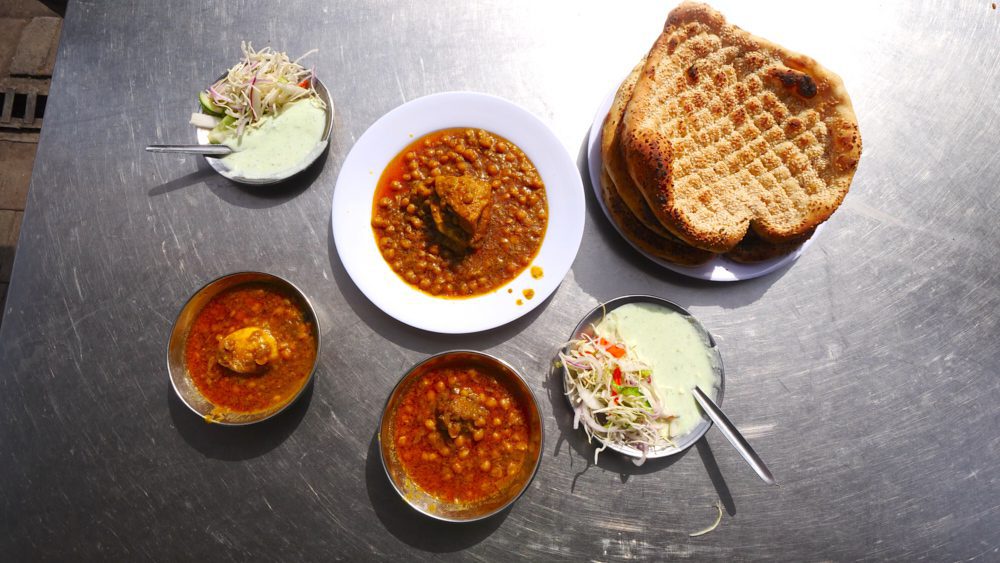
Anyone who is familiar with Pakistani street food in Lahore will know that chickpeas are a staple. Known as chana, they’re usually served in a flavorful gravy or curry. I’ve eaten dozens of varieties of chana since my first trip to the Indian subcontinent in January of 2018. But one of the best was the kind I had at Goga Naqibia on Anarkali Food Street, Lahore’s first food street.
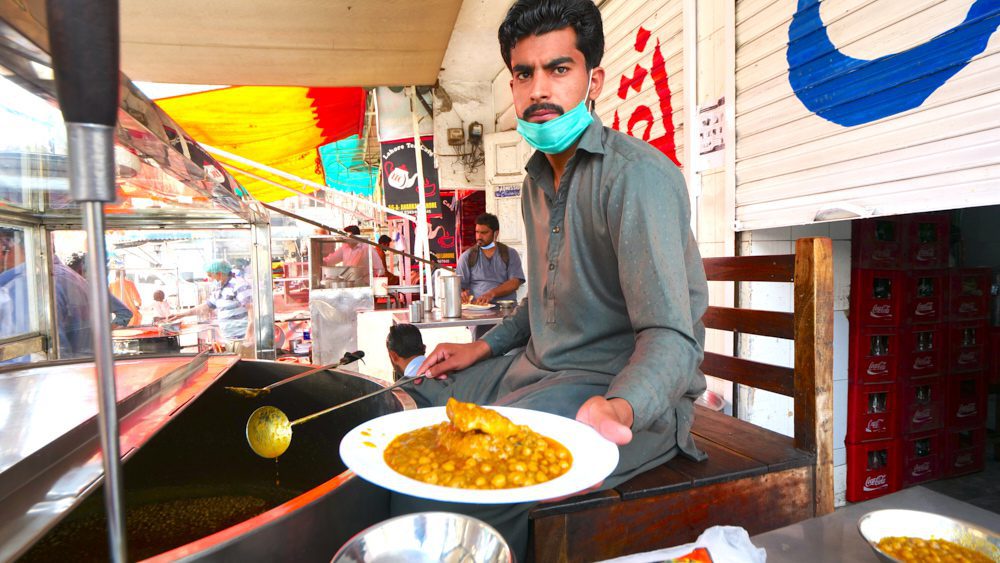
This place is famous for their chana, which the cooks prepare in massive vats. The aroma of the masalas and gravy reaches you long before you get a chance to taste it. I watched a man cook some that looked full of flavor and spice, while others baked naan and heart-shaped kulcha in the back!

I recommend trying three different types of chana there: chicken chana, kofta chana, and egg chana. The chicken chana was mild and creamy and contained large chunks of tender chicken. It was the perfect thing to eat with the chewy, pizza-crust-like kulcha, which absorbed the oily and creamy gravy.
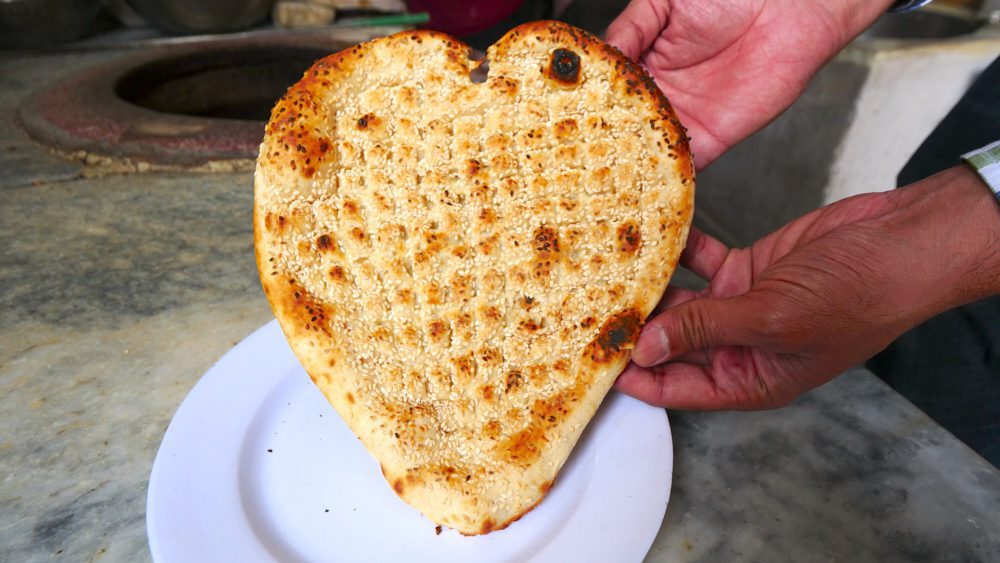
The egg chana was also fantastic. It contained a single boiled egg, which was cooked to perfection. The earthy chickpeas and sulfur-like flavor of the eggs worked extremely well together!
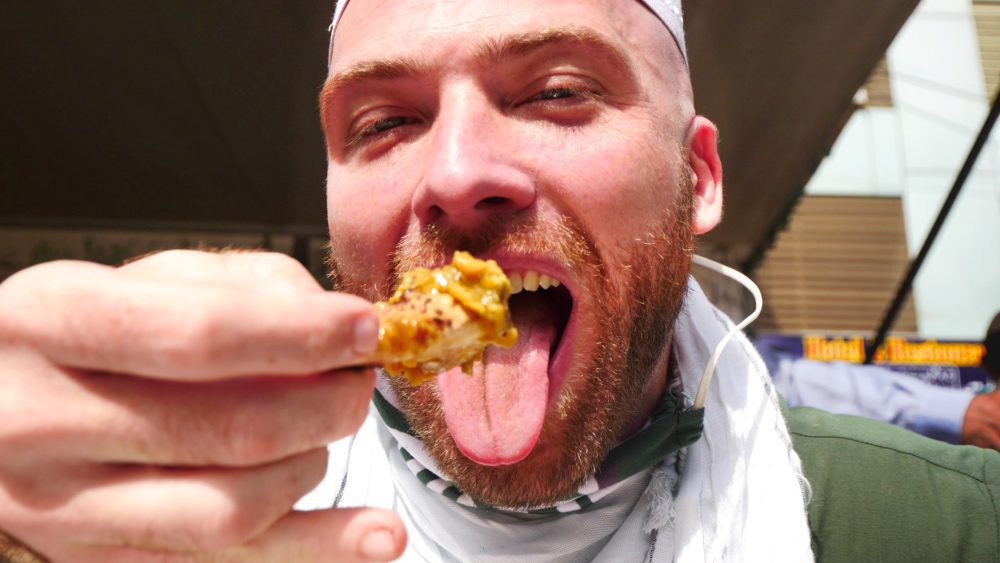
I also couldn’t get enough of the meaty kofta chana, which like the others, was peppery but mild. Adding raita made the dish even creamier and served as a nice palate cleanser. I can’t recommend this dish enough! Trying some is easily one of the top things you have to do in Lahore, Pakistan!
Goga Naqibia
Saman Arcade
Firdouse Market, Gulberg 3, Block J Gulberg III
Lahore, Punjab 54000
Pakistan
+923344282127

One of Lahore’s most famous streets is Temple Road. This busy area is lined with shops, restaurants, and other businesses. Along the streets are butchers, food vendors, and restaurants. One of them is Jaidi Pan Shop, where you can buy fresh juices, ice cream, tea, and coffee. But I was there for their dense but energizing sweet paan, which gave me a jolt of energy!

Nearby, at Mama Kabab, you’ll find vendors making delicious scrambles made from eggs, beef, potatoes, and vegetables. I recommend trying the aloo (potato) scramble and beef scramble, both of which are quite spicy!

The egg-and-beef scramble is full of herbs and spring onions and was absolutely delicious. Pairing it with green chutney and fresh, crunchy cabbage adds even more complexity to an amazing dish. The aloo scramble was equally fiery and amazing and worked well with the chilies and onions in the chutney.

These scrambles were two of my favorite dishes I tried on this trip. Trying them is easily one of the best things to do in Lahore, Pakistan! Elsewhere along the street, you can buy fresh fruit juice, chai, jalebi, bun plaster, and much more! If you’re a curious foodie, this is one area of town you cannot miss!

Another street food haven you can’t afford to miss in Lahore is Taxali Gate Bazaar, located next to the largest mosque in the city. Whether you’re looking for malai, barbecue, biscuits, dal chawal, pulao, kebabs, chicken soup, or the city’s legendary tawa chicken, you’ll find it all here.

The dal chawal is a stew made from yellow dal and chicken. It comes with rice and cabbage salad, and is quite peppery! I also recommend the chana pulao, which contains rice and white chickpeas.

It’s also spicy, so I suggest adding a creamy yogurt sauce called raita to cool down the heat! If you’re more of a potato person, go with the aloo pulao, which is moist, spicy, and very hearty!

As you continue through the bazaar, a wide array of incredible aromas will waft across your face. Don’t miss out on the juicy mincemeat kebabs, which contain flavorful onions and herbs. But no dish here is more legendary than the tawa chicken at Arif Chatkhara House.
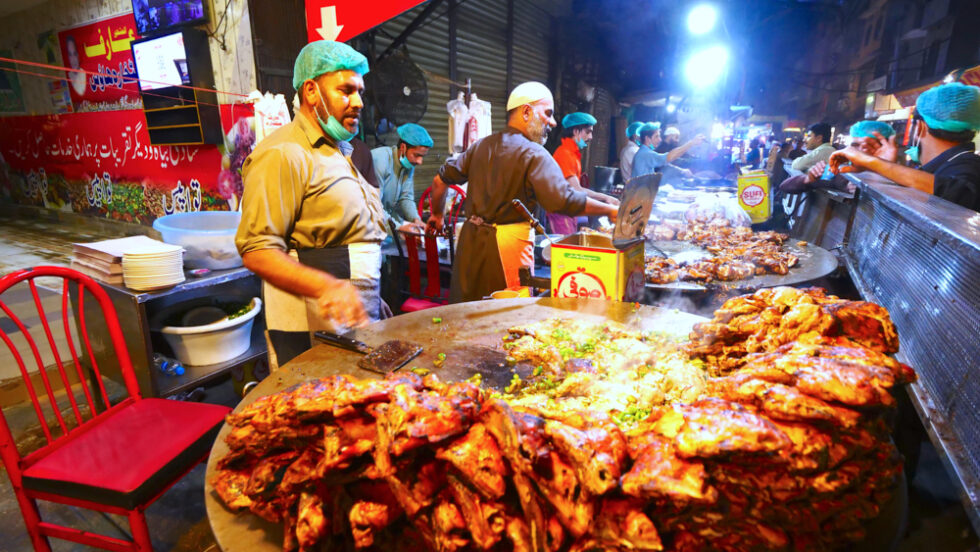
A delectable and unique combination of grilled chicken, a dumbfounding masala mixture, yogurt, ghee, and green chilies, this dish is unreal. It’s juicy, creamy, a little spicy, and slightly crispy and pairs perfectly with some chapati.
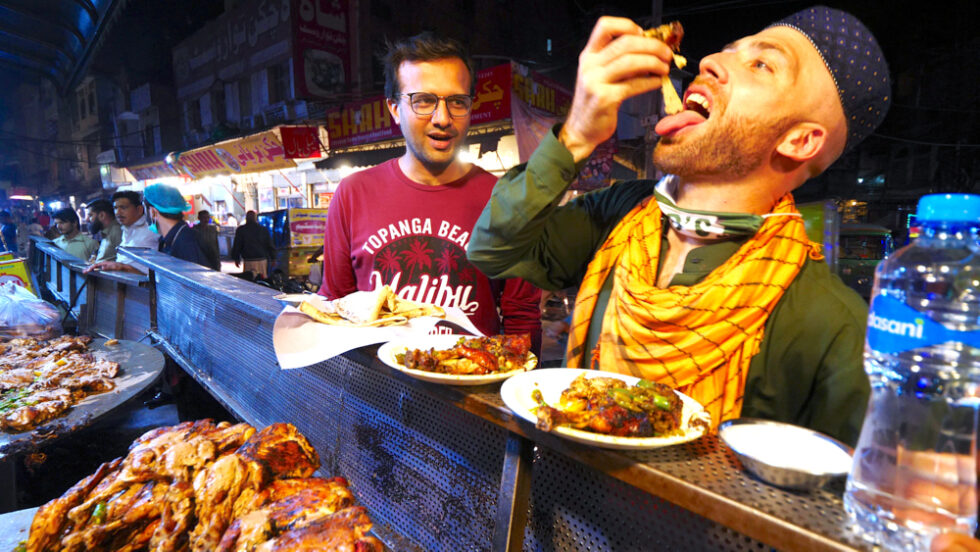
After just one bite, I completely understood why having the tawa chicken is among the top things to do in Lahore, Pakistan. It’s one of the best chicken dishes I’ve ever eaten in my life!
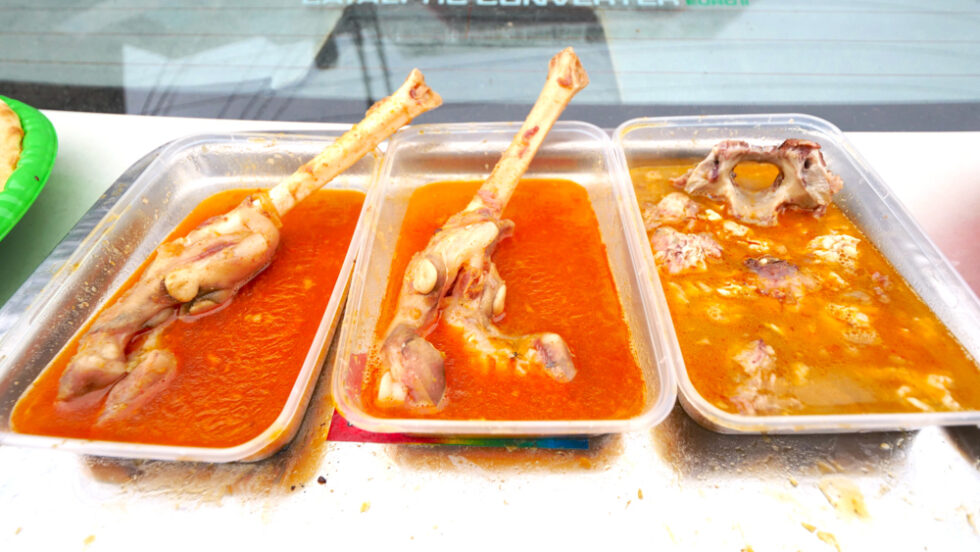
Throughout my twelve-day trip through Pakistan, there was one dish I kept seeing everywhere: paya. Paya is a meaty stew made from goat legs and goat brains in a savory broth. You can find this delicacy almost everywhere in Pakistan, but it’s a specialty in Lahore. My guides throughout my trip told me I should wait until Lahore to try it, and I’m so glad I did.
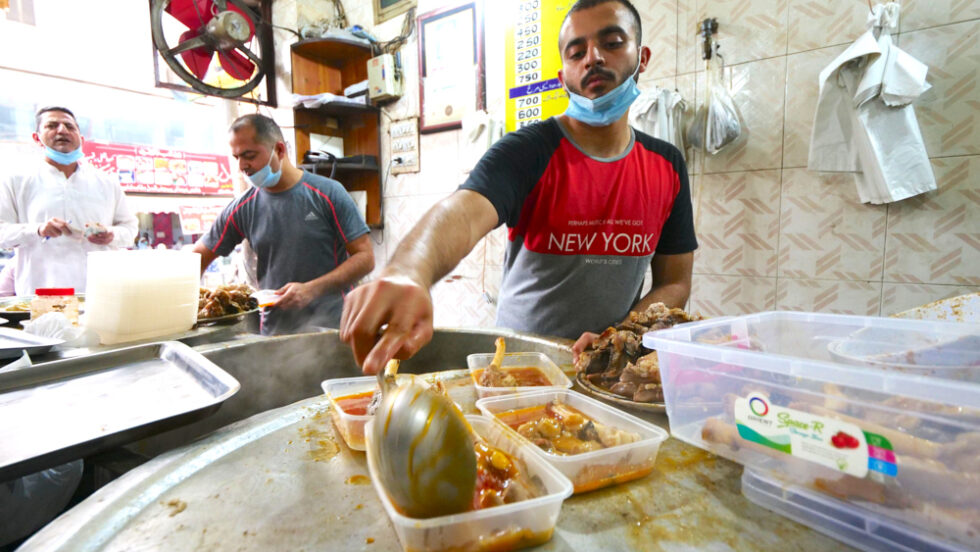
I understand that organ meat isn’t everyone’s cup of tea, especially something like brains. I grew up eating organ meat—it’s a big part of Latin cuisines—so I’ve never had an issue with it. I’ve actually had more issues with animal feet, but these were so tasty.
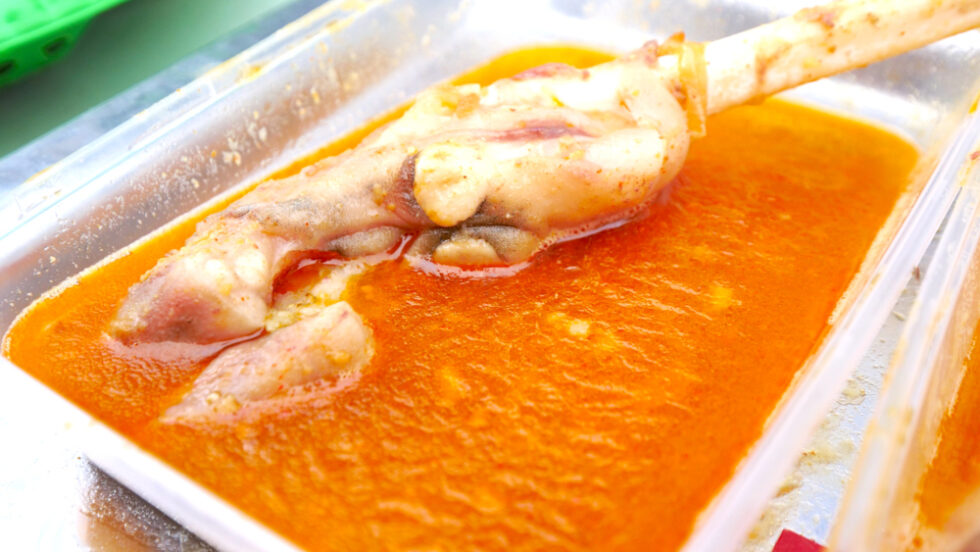
For our paya, my guides and I headed to Al-Sahat Corner on Temple Road. As my trip was during the COVID-19 pandemic, we ate outside on the trunk of our car. They served us the goat legs and brains in separate containers, along with fresh naan.
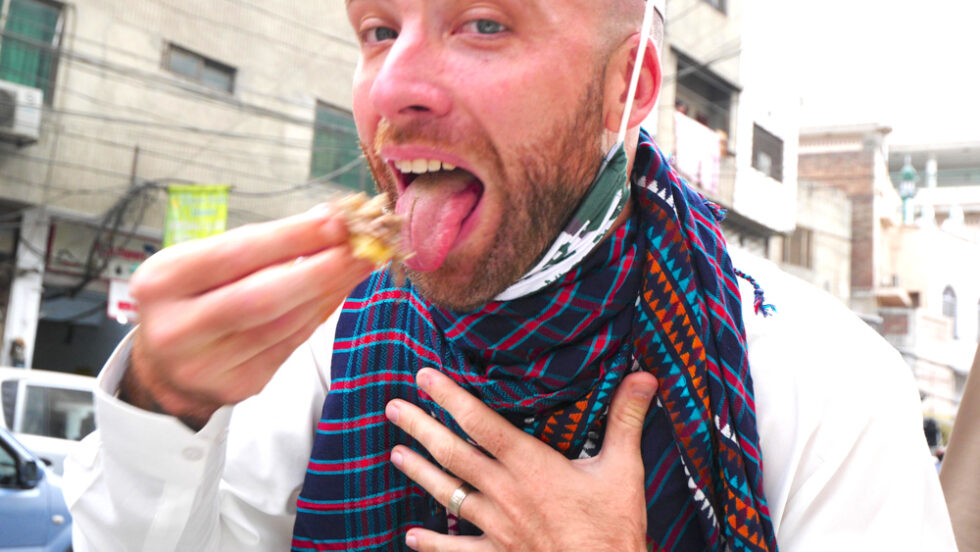
The leg meat had been slow-cooked for a long time, which left it tender, buttery, and practically falling off the bone. But my favorite element of the paya was the brains. They were simultaneously spongy, creamy, and buttery, and went down so easily. Grabbing them with the naan and allowing it to soak up the gravy was one of the most incredible flavor experiences I had in Pakistan. Of all the things you must do in Lahore, Pakistan, eating paya is near the top of the list!
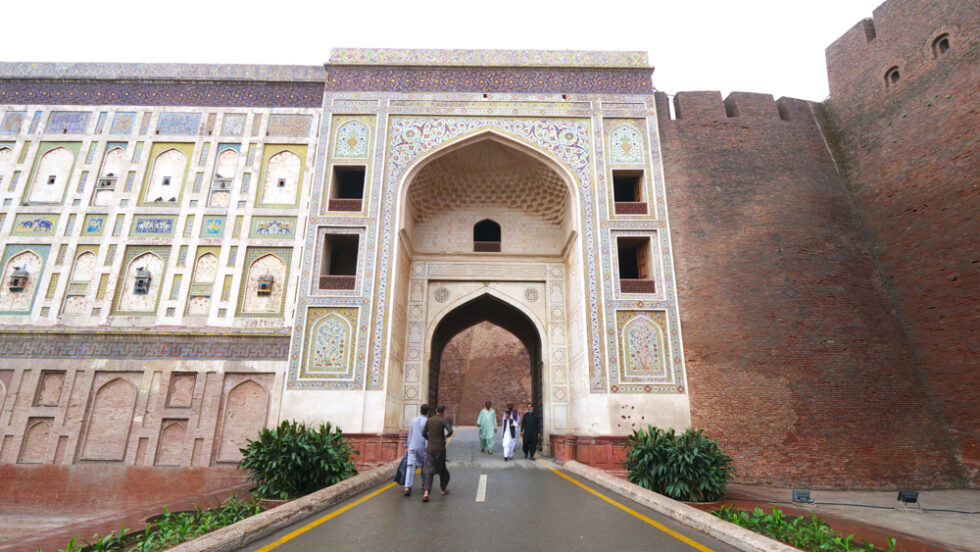
The Jahangir Tomb Complex is just one of several noteworthy historical sites you should visit in Lahore. Another is Lahore Fort, a beautiful, Mughal-era citadel built by Emperor Akbar I in the 16th century.

Before heading inside Lahore Fort, I suggest checking out the picture wall, which is adorned with colorful and complex designs. Through the gate, you’ll find a wide staircase consisting of 58 steps called the Elephant Steps. Above the steps are balconies where slave girls would toss rose petals down onto the emperor as he arrived.
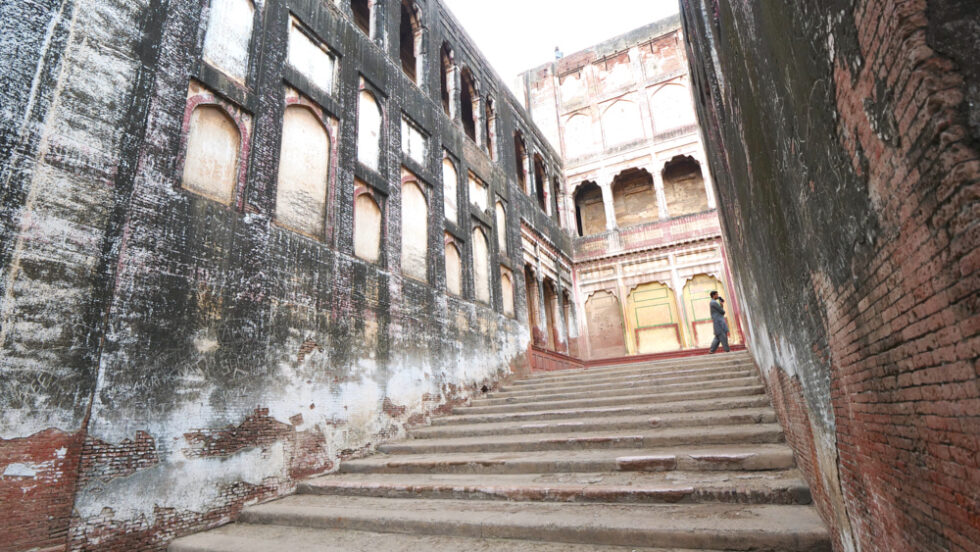
The fort itself is made of lots of red sandstone. It reminded me of forts I’d visited in the city of Jaipur in India, as well as structures I saw in Uzbekistan in 2019. The Mughal Empire stretched from present-day India to as far away as Afghanistan and Uzbekistan, so there are lots of similarities in the historical architecture.

One of the most interesting parts of the fort is the Mirror Palace. Its walls and ceilings are covered in small pieces of glass, inlaid into the walls almost like a mosaic. Back in 1632, the emperor built it for his wife, who asked to be able to see the stars.

If you shine a light or candle in the dark palace, its light is reflected back in the tiny mirrors, giving off the illusion of thousands of stars all around you! If you’re a history buff like me, you can’t miss Lahore Fort and Lahore Museum just 15 minutes ride from Lahore Fort. It’s one of my favorite things to do in Lahore, Pakistan!
Lahore Fort
H8Q7+56P
Fort Road
Walled City of Lahore
Lahore, Punjab, Pakistan
+924299204196
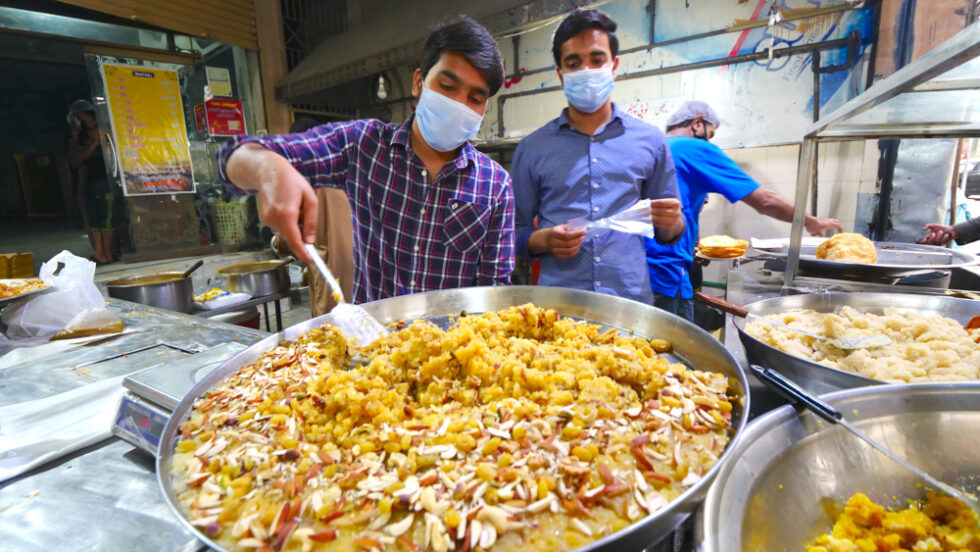
Another extremely popular dish you’ll find throughout Pakistan is halwa puri. This breakfast item actually consists of several different elements: a flaky puri, a sugary semolina dish called halwa, and chana. It’s both sweet and savory. One of the best places to try some in Lahore is Sadiz Halwa Puri in fort road food street.
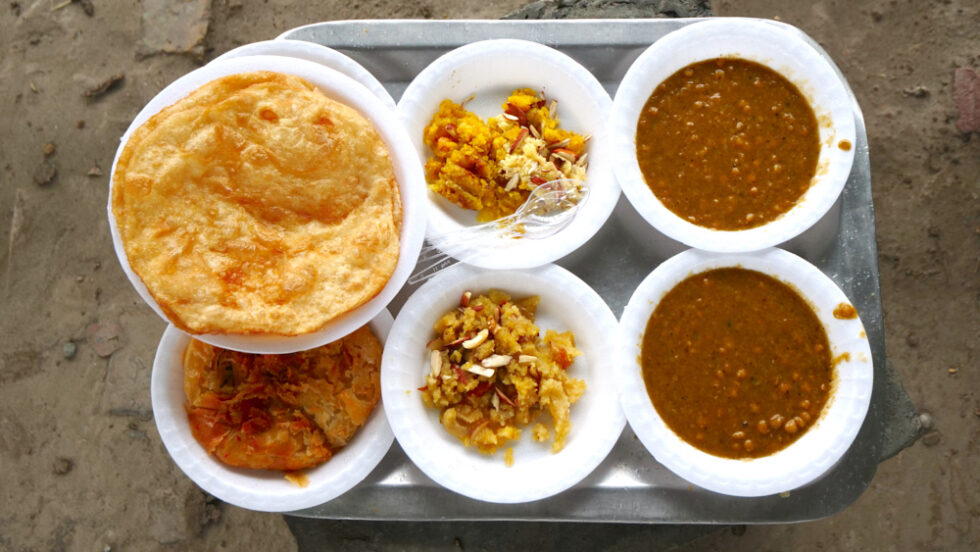
There, you can order several different types of halwa, including plain halwa, khoya halwa, and saffron halwa. For a change of pace, I went with the khoya and saffron, the latter of which contained the expensive spice along with dried fruits and nuts. If you want, you can also try their mutton kachori and chicken kachori, which are flaky biscuits stuffed with meat.

Adeel, Rashid, and I enjoyed our halwa puri outside in the rain, underneath a nearby overpass. The saffron halwa contained lots of saffron flavor and was sweet, nutty, and oily. Combining it with the savory chana and crispy puri was amazing.

I also liked the mutton kachori, which reminded me of the Cuban empanadas I often eat at home in Miami. If you’re looking for a great snack while exploring the city, this is it! It’s one of the top things to do in Lahore on your next Pakistan trip!

If you have a hankering for a filling, savory snack while you’re in Lahore, look no further than Five Star Nan Shop. This restaurant is a local favorite and is famous for its eight unique naans, which they bake in two massive tandoors.

My guides and I ordered five of the eight: beef, cheese, chicken, potato, and gram, along with some raita on the side. The beef naan had bits of meat baked right into the bread and was crispy, eggy, and rich from the ghee they’d brushed on it.

I also liked the gram flour naan, which reminded me of a pizza crust. The potato naan was soft and slightly charred on the outside, and contained a manageable amount of spice. Meanwhile, the cheese naan was the most pizza-like of them all, and contained sesame seeds, peppers, and loads of delicious cheese.

You also can’t beat the chicken naan, which contained bits of shredded chicken and added a hearty texture. But the best thing about all of the naans is that they had the signature, smoky flavor you can only get from a tandoor oven. They’re filling and delicious, and easily one of the best things to do and eat in Lahore, Pakistan!

If you walk just two minutes from Lahore Fort, you’ll come across yet another of the city’s most stunning historical sites, Badshahi Mosque. It’s also known as the Royal Mosque. Like the fort, the mosque was built using lots of red sandstone. It also has a massive courtyard, gardens, four minarets, three domes, and several smaller buildings. The mosque itself is the sixth-largest in the world!

I’ve visited dozens of mosques around the world in my travels. As is customary, you must remove your shoes when you visit. As I walked around the wet, rainy courtyard completely barefoot, I couldn’t help but admire the architecture and the precision of the designs carved into its walls.

While I didn’t go inside the actual mosque, just viewing it from the outside was quite a special experience. I learned that roughly 100,000 people pray there, and I could feel its spiritual significance even from outside. Definitely one of the can’t-miss things to do in Lahore, Pakistan!
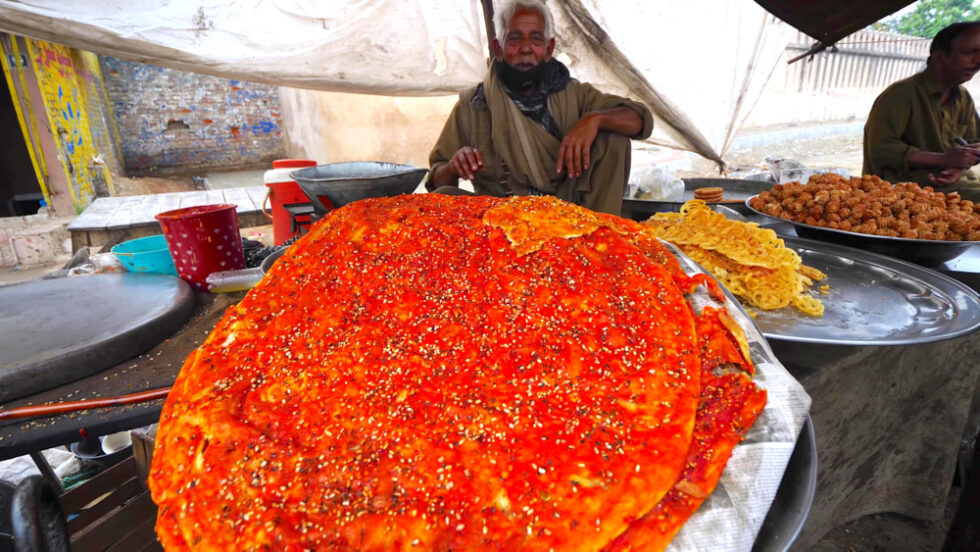
If you decide to make your way to the visit Pakistan/India border for the Lowering of the Flags Ceremony, I suggest making a stop along the 30-minute drive. Roughly fifteen minutes from the border is a UNESCO World Heritage Site called Shalimar Gardens. Outside the site is a street food vendor selling sweet pakoras and a dish called qatlama.

The qatlama is like a large, thin, deep-fried pizza crust covered in a bright red masala. It’s basically oily, fried dough. It sounds simple enough, but the flavors are outstanding. It’s very fatty and extremely flavorful, and a nice snack to eat on a day trip.
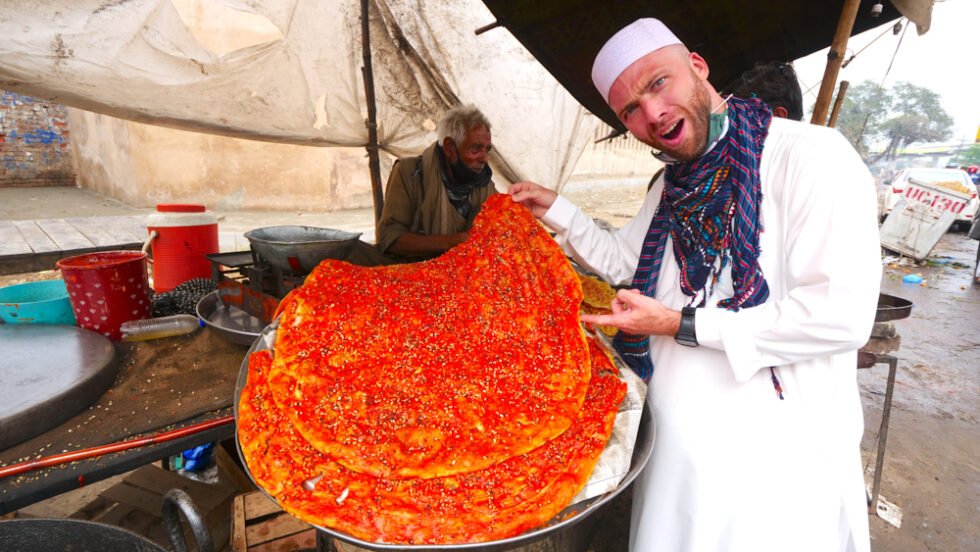
The sweet pakora had a nice, crunchy exterior and a soft middle. It came covered in sesame seeds, which added a nutty earthiness to the sweet dish. I recommend washing it down with some doodh patti, a rich and creamy variety of chai made only with milk. I can drink chai all day, and this one is one of my favorite things to do in Lahore, Pakistan!
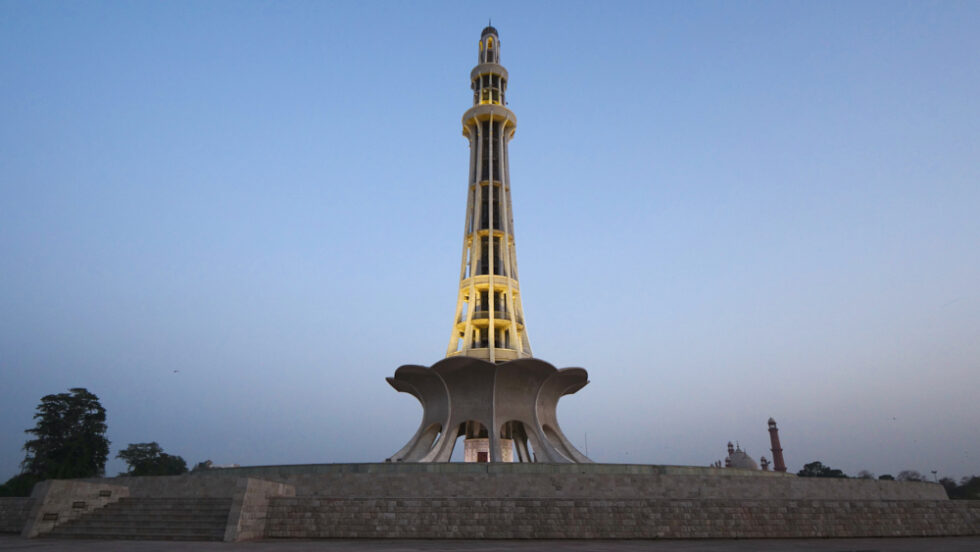
Another important site you shouldn’t miss in Lahore is Minar-e-Pakistan, a tower-like national monument built between 1960 and 1968. It’s significant because it stands in the exact spot the All-India Muslim League passed the Pakistan Resolution, then known as the Lahore Resolution.
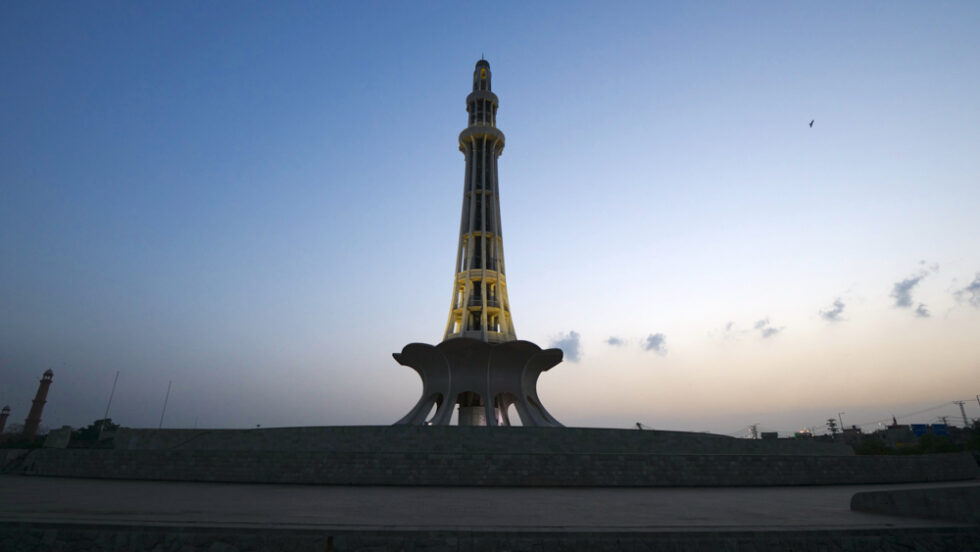
The Resolution, which passed on March 23, 1940, led to Pakistan becoming its own independent state in 1947. The national emblem of the country, Minar-e-Pakistan is seen as a manifestation of post-colonial national identity.

The tower itself is a blend of architectural styles, including Mughal, Islamic, and modern architecture. It stands 230 feet tall and was designed by Nasreddin Murat-Khan, who included several inscriptions on the tower’s base. They include the text of the Lahore Resolution in Bengali, Urdu, and English, as well as Quranic verses, the 99 names of Allah, the national anthem, and more.
Minar-e-Pakistan
Circular Road
Walled City of Lahore
Lahore, Punjab 54000
Pakistan

If you’ve followed my blog or YouTube channel for a while, you’ll probably know that pani puri is my favorite South Asian snack of all-time. These little, crispy balls of leavened flour usually come filled with potatoes, chickpeas, onions, various chutneys, and jaljeera water. It makes for one of the most mind-blowing flavor and texture combinations I’ve ever experienced in my life! They go by many names throughout the region, including fuchka and golgappa.
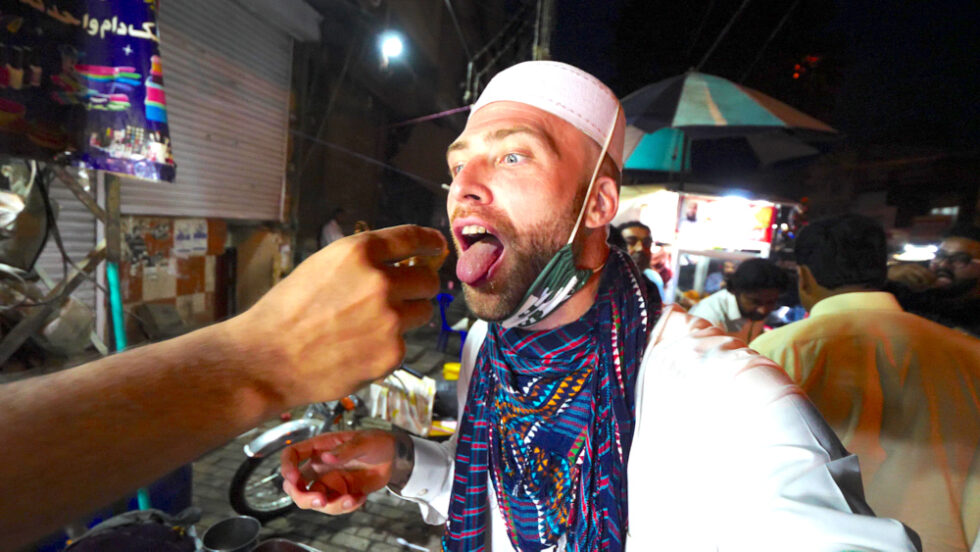
But at Tofel Bhai, a unique golgappa stand in Lahore, they make them using chickpeas, fruit chats, yogurt, and roughly 10 different chutneys! Even the pani, or jaljeera water, is unique, as it’s very citrusy and contains orange, lemon, tamarind, and mint. The vendor creates a mixture for you and feeds it directly to you so you can sample it.
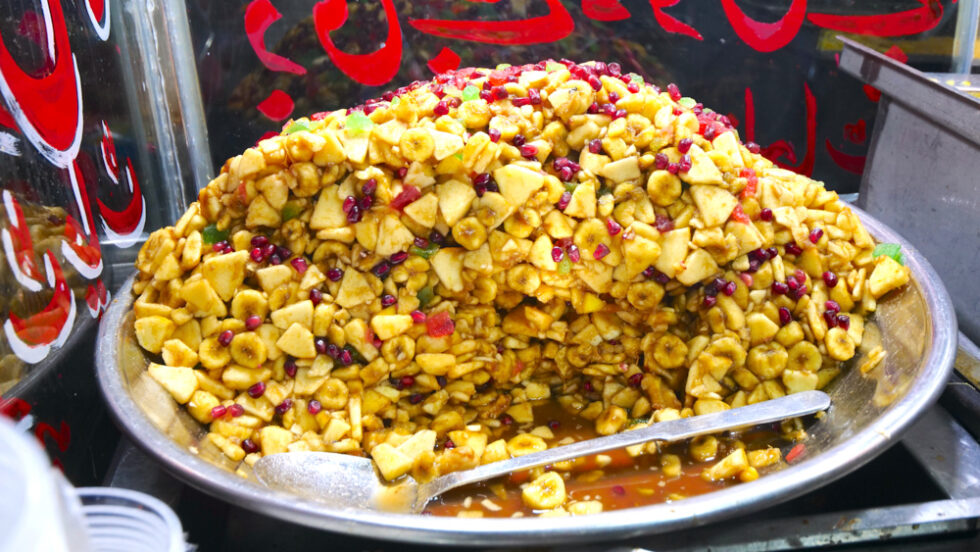
I loved the banana, tamarind, and dried fruit in it, as well as the kick of heat. It was such a mind-blowing take on a street food dish I’ve had dozens of times.
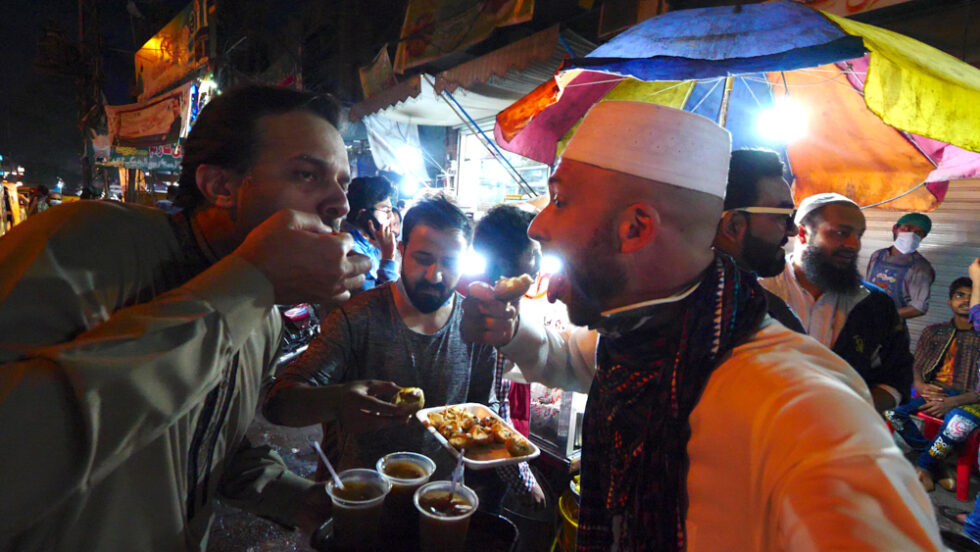
Each one was slightly different, as they used different ingredients and chutneys in each one. The chana-potato-cabbage-masala one was amazing, but the fruit ones were unreal! They were like a roller coaster of new flavor combinations on my tongue and had me dying to try more! It is easily one of the top things to do and eat in Lahore, Pakistan.
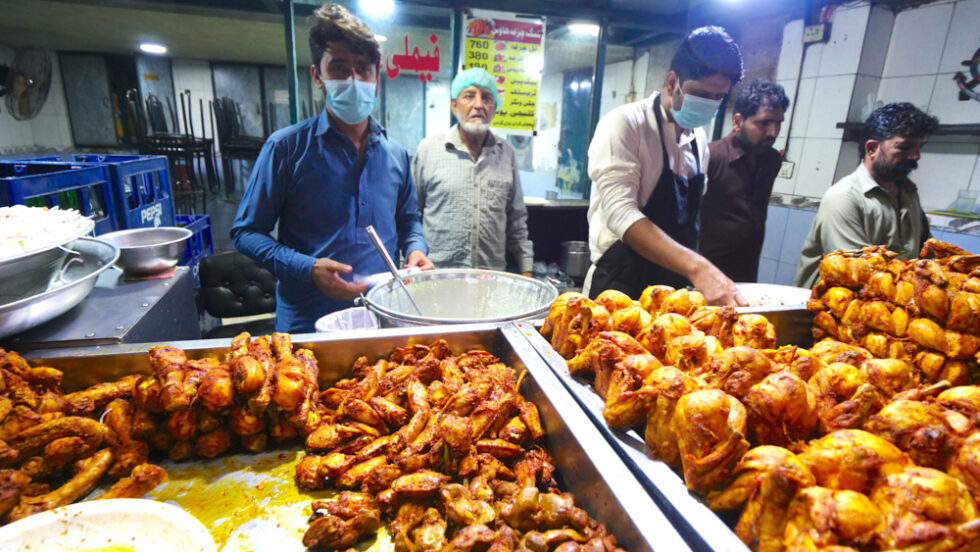
There are lots of spectacles to see on the streets of Pakistan when you visit. One I came across again and again in nearly every city is chicken chargha. This dish consists of whole chickens cooked on vertical spits around a charcoal grill.

At King Chargha House, they steam and fry the chargha, and also sell innards like the liver and stomach on the side. The steaming and frying technique made the chicken incredibly tender and moist.
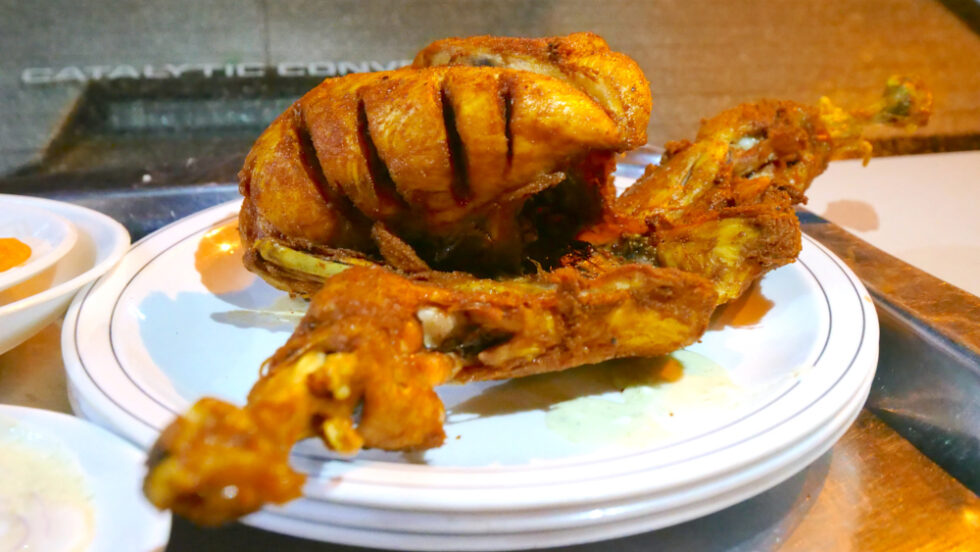
Even better, it came coated in a rich masala that added an insane amount of savory flavor. Add some raita for a creamy element, but it honestly doesn’t need it. It’s amazing on its own!
King Chargha House
Abbott Road
Qila Shah Faisal
Qila Gujjar Singh
Lahore, Punjab 54000
Pakistan
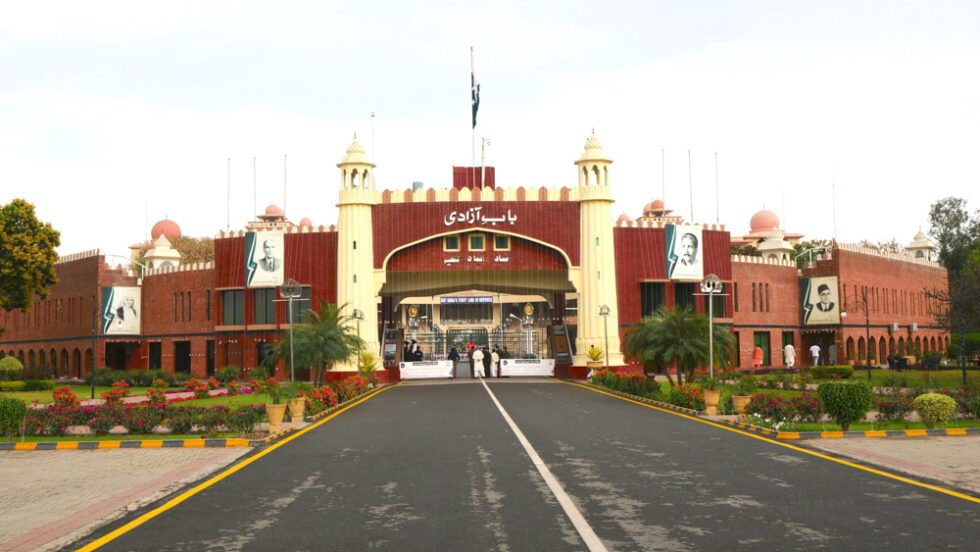
Roughly a 30-minute drive east from Lahore will take you to the Wagah border, the boundary between Pakistan and India. Splitting the border is a large stadium where you can witness the daily Lowering of the Flags Ceremony.

This was my second time in this stadium, but my first experiencing the ceremony from the Pakistani side. Back in November of 2018, my friend and fellow travel blogger Sam and I attended the ceremony on the Indian side during our time in Amritsar.

Both countries have an immense amount of national pride, and their rivalry has been well-documented over the years. As we arrived at the stadium, I bought a Pakistan flag from a vendor while my friends got the national colors painted on their faces.

Inside the stadium, everyone was spread out due to the pandemic, and the Indian side of the stadium was practically empty. But the ceremony itself, which features men high-kicking, dancing, and marching in formation, is always a joy to watch. The ceremony ends with the flags of both countries being lowered. It’s thrilling and among the things you must do in Lahore, Pakistan!

One dish you have to try in Lahore is another specialty called taka-tak. The dish is essentially a meat scramble, consisting of mutton meat, heart, liver, brains, and testicles. Like the paya and chicken chargha, I’d seen it in other cities but waited to try it in Lahore since I was told it’s next-level there.

The vendor at Gurda Champ Shop cooks the meat on a large, hot grill, using a pair of unique metal tools to break and chop it up. The sound of the tools on the grill is how the dish gets its name! He then added tomatoes, onions, chilies, ginger, black pepper, and more for a spicy, savory, and oily dish I won’t soon forget.

Surprisingly, the gaminess and metallic-like taste that organ meat tends to have weren’t present at all in the dish. In fact, you probably wouldn’t know it was organ meat unless you saw it being prepared. I loved digging in with some naan and grabbing huge chunks of the mixture. It was good enough to eat by itself!

If you’re into organ meat, or just tasty meat dishes in general, you can’t miss taka-tak. If it’s not on your list of things to do in Lahore, Pakistan, you’re not doing Lahore right. Try it and see if you like it!
Gurda Champ Shop
61 G.C.P Society, Street 6, Johar Town
Shaukat Khanum Hospital Chowk
Pir Mansoor Colony
Lahore, Punjab 54000
Pakistan

If you’re a traveler who likes to immerse yourself in local life and culture, you’ll probably spend a lot of time in bazaars in South Asia. They’re always bustling and full of people going about their day, buying produce and clothing, and vendors selling everything from shoes to accessories to street food.

In Lahore, one of the most colorful and vibrant locations is Ichra Bazar, the city’s most famous cloth market. There, you can buy fabric, jewelry, and clothing, as well as home goods like brooms and storage bins. The vendors are also very friendly, so feel free to chat with them as you browse.
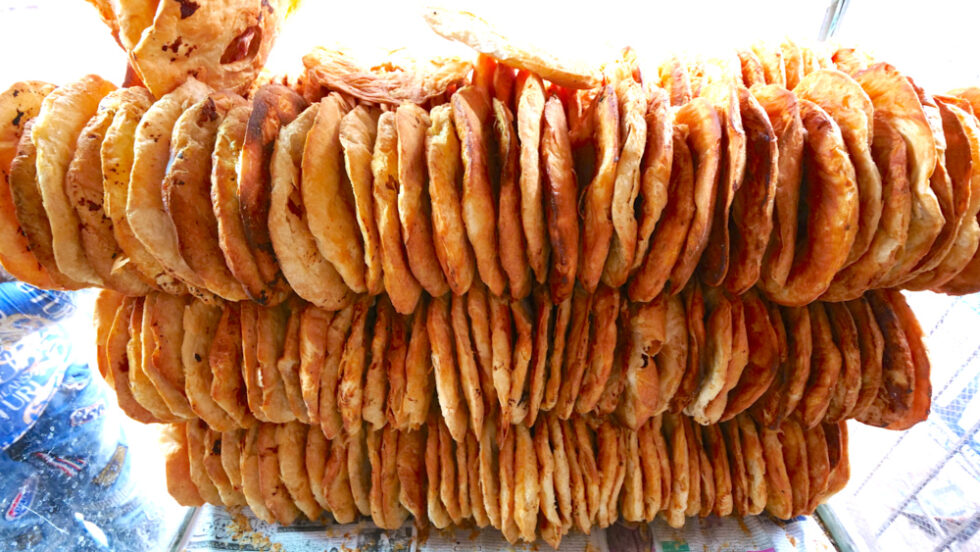
Of course, there’s also street food. One thing you’ll find is bakarkahni, which is a flaky, doughnut-shaped biscuit. If you’re lucky, the vendor may even give you some for free!

Further on, you’ll come across a common sight in bazaars around the world: butchers dismembering carcasses and cutting up animal organs. You can also see the rather shocking sight of fresh goat heads arranged on tables, as well as more mundane things like cups, jars, vegetables, and dried fruit.
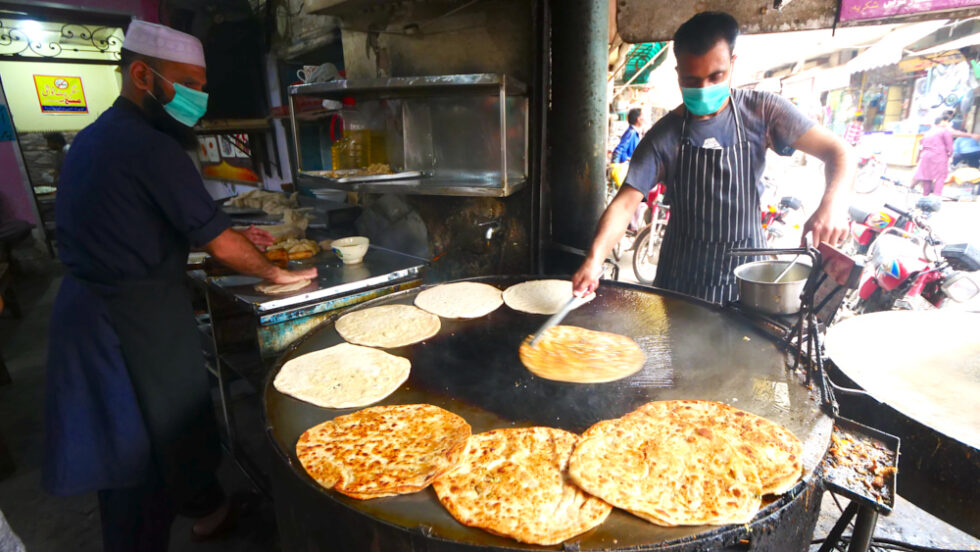
At Al-Rizwan in the bazaar, you can try their amazing aloo parathas and chicken parathas, which have an amazing texture and almost look like pizzas.
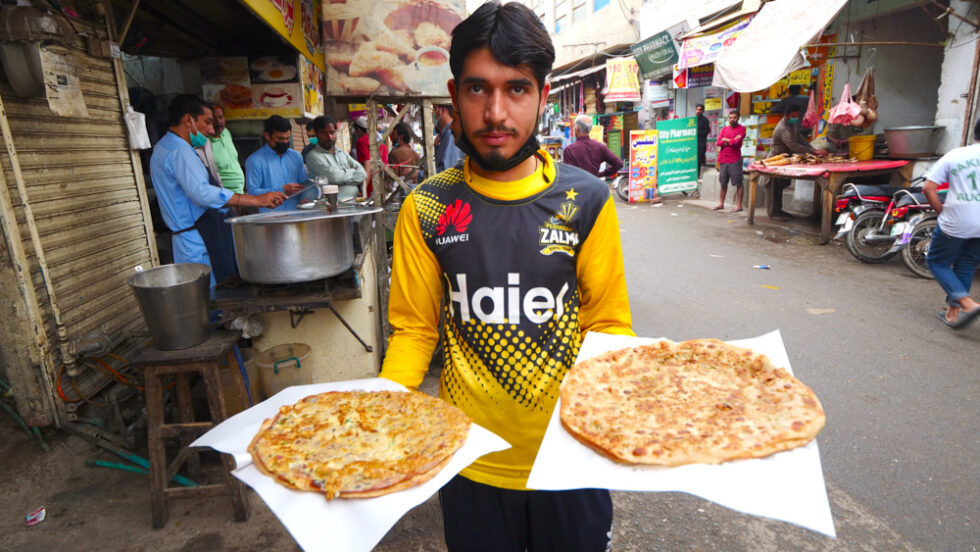
At Akbar Milk Shop, the most popular dairy shop in Lahore, you can try some sweet malai, which they prepare in massive vats.
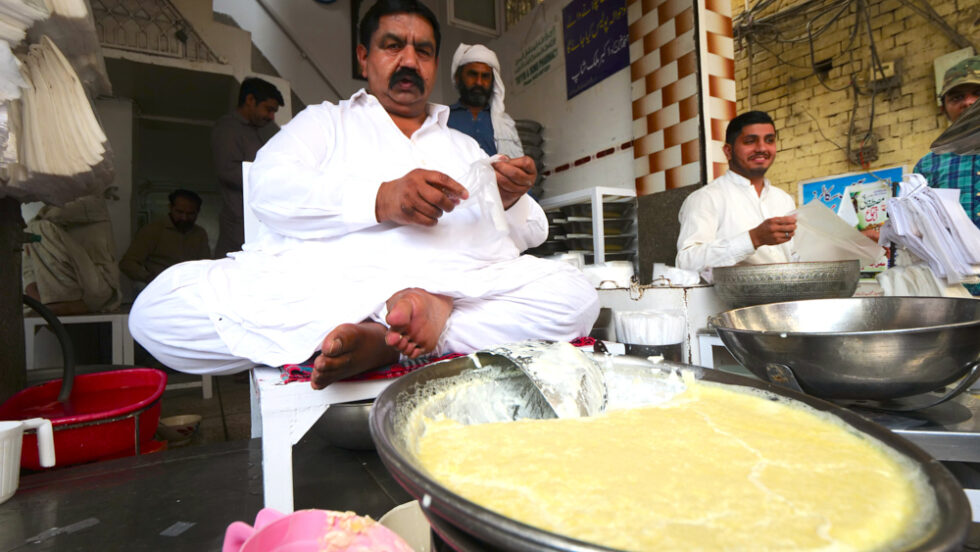
One of my favorite spots was Shahi Pathoora, Lahore’s most famous puri shop. The pathoray look like large puris and come with chana, cabbage, pickles, and raita. They’re a little spicy and incredibly flavorful.

Wash it down with some seviyan, which is a creamy dish made from thin noodles. Or, if you prefer, try some dahi bhalla, which is a creamy chaat made from fried dough, yogurt, chickpeas, and mint chutney.
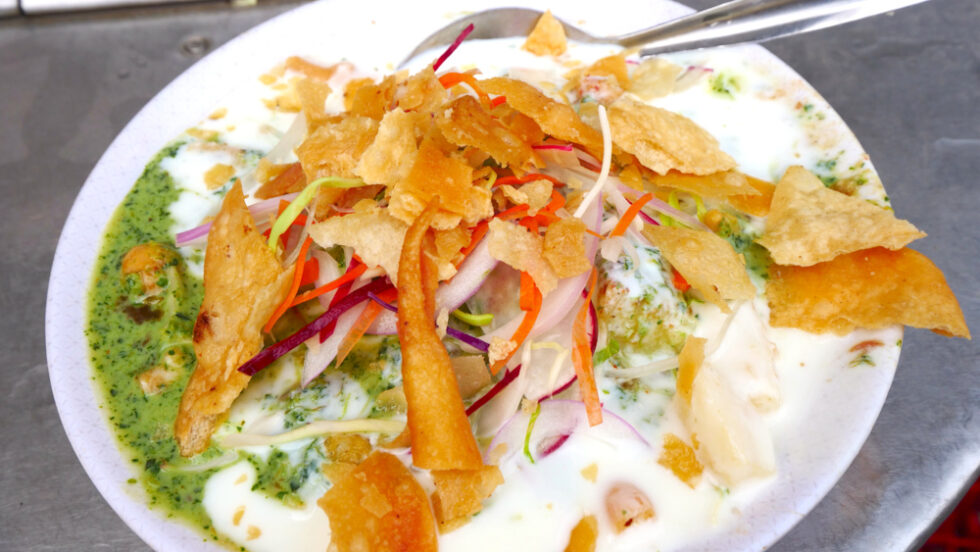
It’s a creamy and refreshing way to end a street food tour! Eating street food is one of the best ways to get a taste of local life, and even though it comes with risks, I always say go for it. Just be smart! Trying the local street food is one thing everyone should do when they go to Lahore, Pakistan!
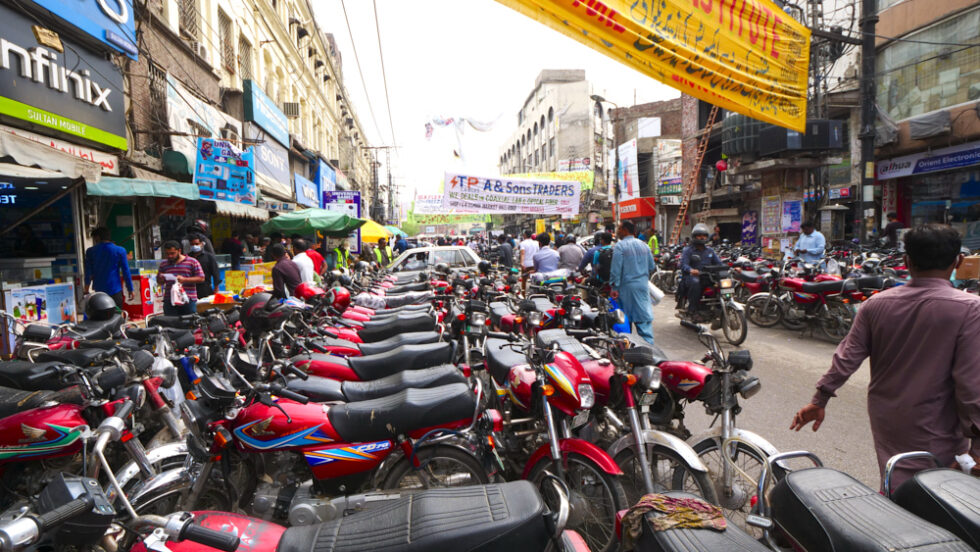
If you ever find yourself in need of electronics, there’s no better place in Lahore to shop than Kacha Hall Road. This packed, bustling road serves as a large electronics market. I was blown away by just how busy it was.

It reminded me of my time in Chandni Chowk in Delhi, easily the most tightly-packed location I’ve ever visited in my life! Everywhere I looked, I saw customers carrying televisions and computers on their shoulders.
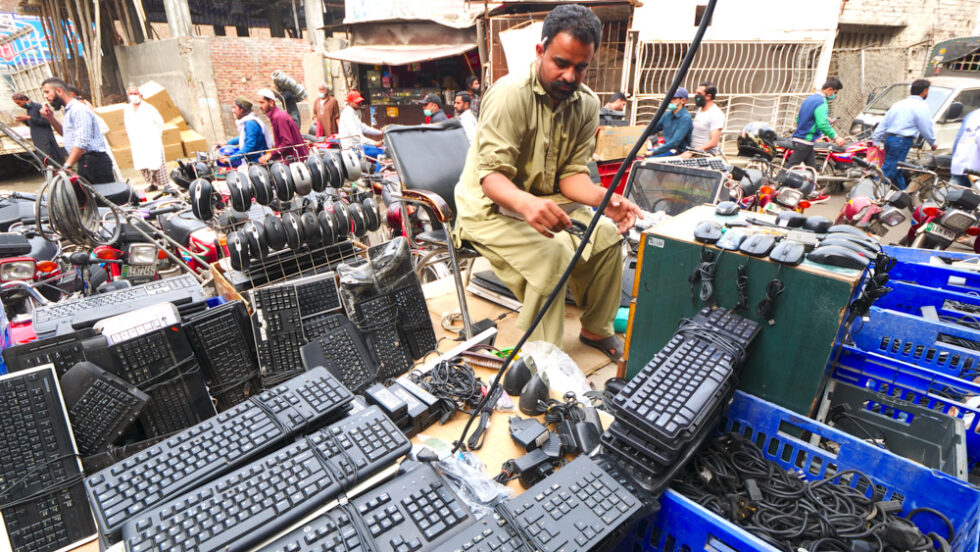
Along Kacha Hall Road, you’ll find vendors selling cell phones and accessories like phone cases and screen protectors. If you’re looking for a new cell phone, you’re better off checking out the brick-and-mortar shops. The kiosks outside sell used phones.

There are also shops where you can buy refurbished computer equipment. From towers to mice to keyboards to laptops, you’ll find it all there. Despite them being refurbished, they look as good as new and are available at affordable prices!
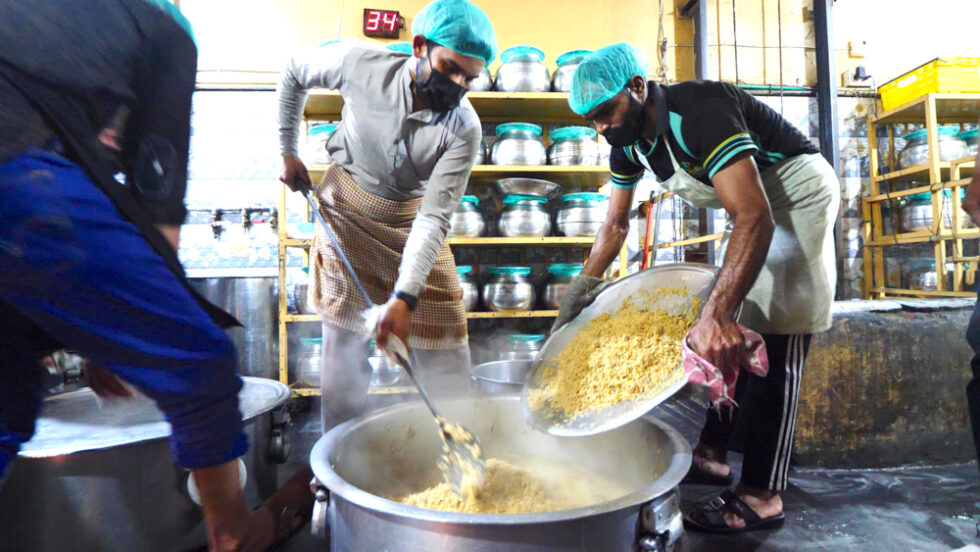
No trip to South Asia is complete without having some biryani. This complex, layered rice dish comes in seemingly dozens of regional variations and is one of my favorites. To try some in Lahore, head over to Waqas Biryani House along Kacha Hall Road.

They cook biryani the traditional way, in giant vats. Just watching them mix and cook the masalas and add the rice was quite a spectacle! As is always the case with biryani, the masalas are so aromatic that your mouth begins to water long before you get to taste it.

Rashid, Adeel, and I ordered some chicken biryani, a shami kebab, a salad, and some raita. The steamed and lightly fried chicken was so moist and tender, it practically disintegrated in my mouth. The rice was also excellent and had a nice kick of heat to it, but was full of flavor as well.
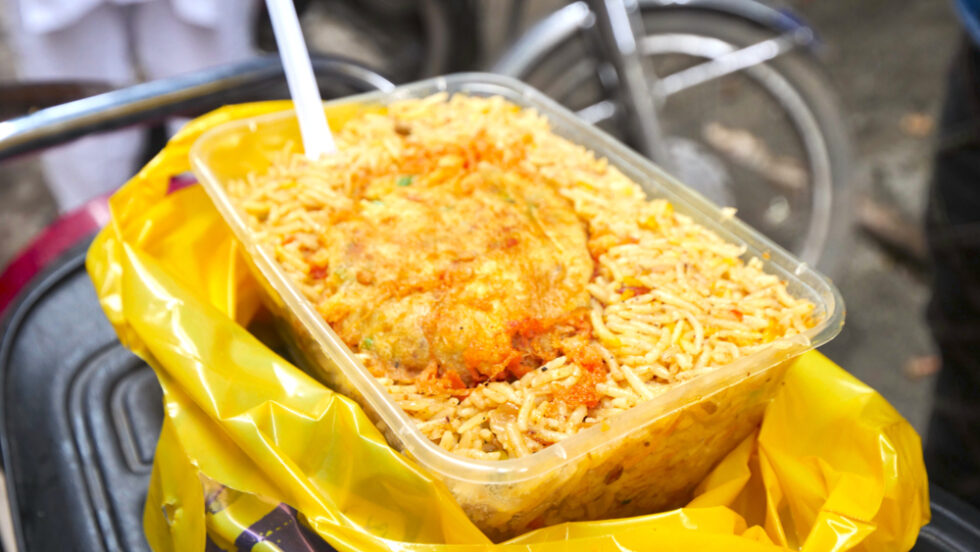
I also really enjoyed the soft shami kebab, which paired well with the biryani. Adding the raita added the creamy texture I love, and cooled my mouth down. It’s the best accompaniment for spicy foods! Eating biryani is among my favorite things you can do in Lahore, Pakistan, so be sure not to miss it!
Waqas Biryani House
Kacha Hall Road
Garhi Shahu
Lahore, Punjab 54000
Pakistan
+923224094849
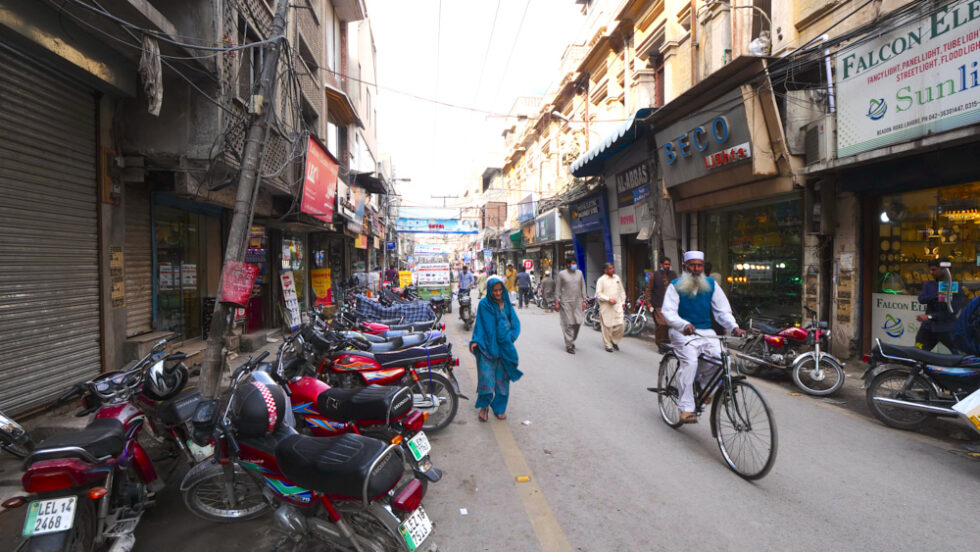
Along with Kacha Hall Road, another fantastic place to explore daily life in Lahore is nearby Beadon Road. Like on Kacha Hall Road, you’ll find a number of electronics shops along the narrow and bustling street. But there are also lots of places to grab quick and delicious snacks.

A little ways down the road is Amritsari Sweet Shop, a spot that dates back to 1947. I’m not a huge sweets person, but I’m always down to try South Asian sweets like patissa, gulab jamun, rasgulla, and barfi.
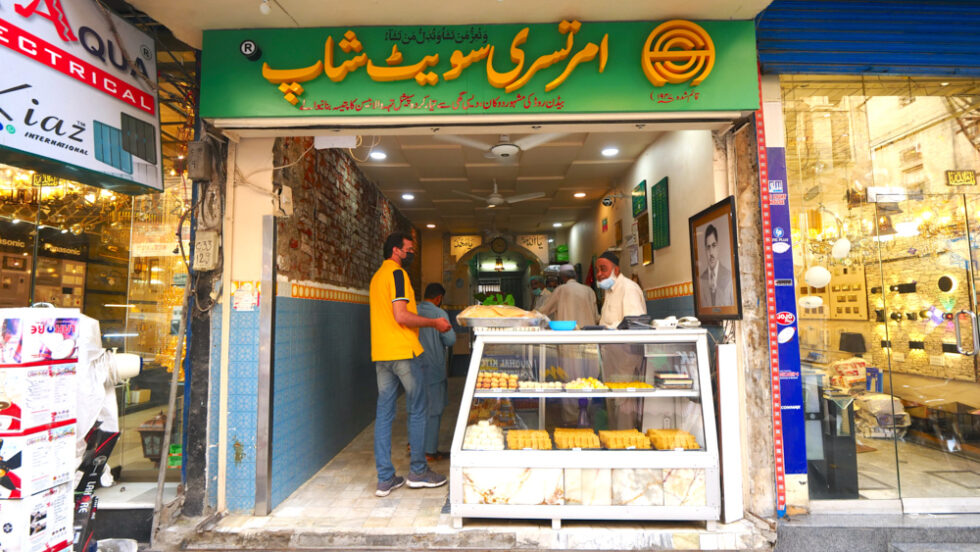
I really liked the cloyingly sweet gulab jamun and the dense, multi-layered patissa. The barfi had a crumbly texture, and the rasgulla was moist and very sweet. I highly recommend them!

If you’re still in need of something sweet, head toward the end of the road to Chaman Ice Cream Shop. It’s Lahore’s most popular ice cream parlor for a reason! They sell many unique flavors, but I went with their chocolate and vanilla.

The vanilla, in particular, was very different from the vanilla I’m used to. I loved it, especially mixed with the chocolate. And best of all, it finally tempered the heat lingering on my tongue from the biryani I’d eaten earlier! It’s easily among the best things to do in Lahore, Pakistan after a spicy meal!

As a foodie city, Lahore has a number of famous establishments that are must-visits for anyone exploring the city. One of them is Molvi Gol Gappa, an eatery famous for its laddu peethi. The dish consists of a deep-fried lentil fritter served with various chutneys.
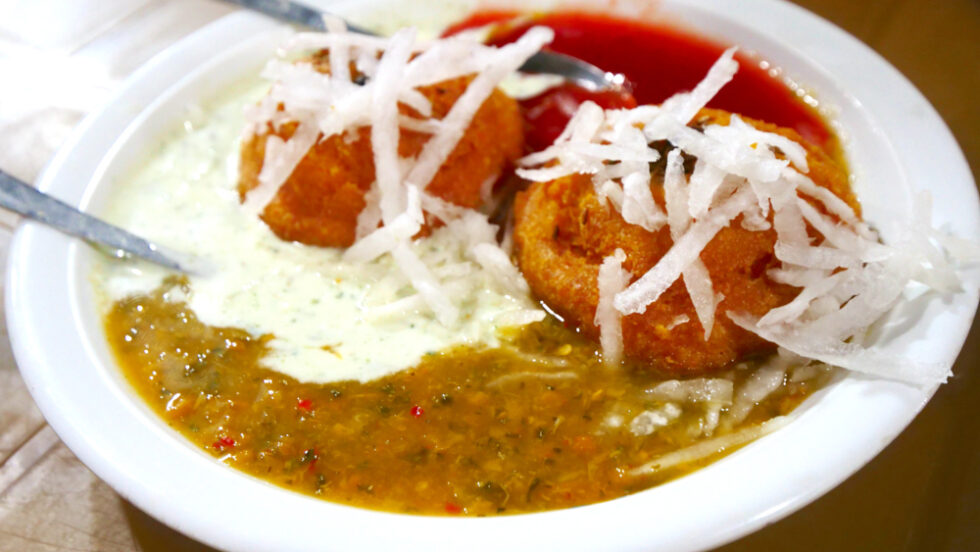
They also sell a type of golgappa that came with a sweet pani, a sweet-and-sour chutney, and raita. I loved the sweetness and the complex flavors of this golgappa. The pani alone was good enough to drink!
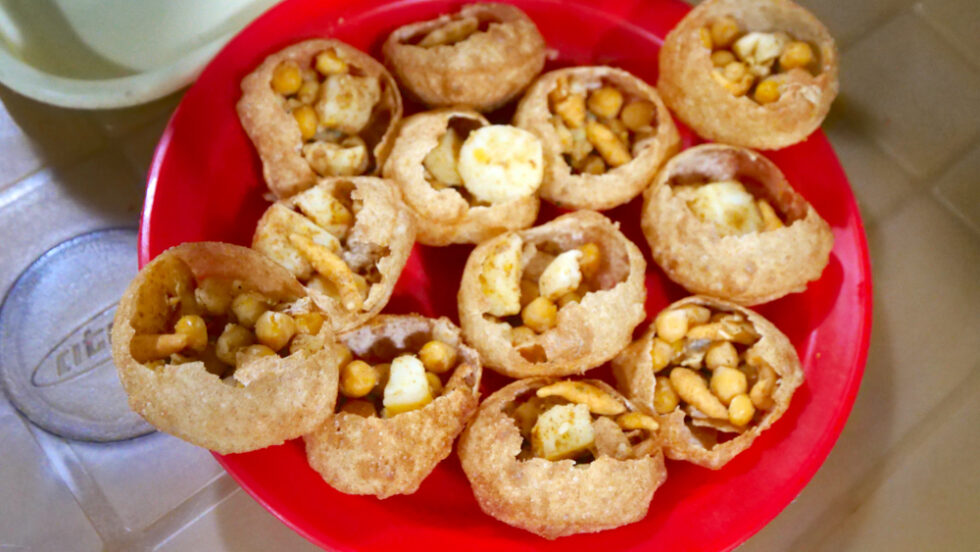
But as much as I love golgappa, the star of the show was the laddu peethi. The doughy, earthy fritter, when mixed with the raita and chutneys, was excellent. It’s sweet and creamy, and absorbs all of the flavors of the chutneys.
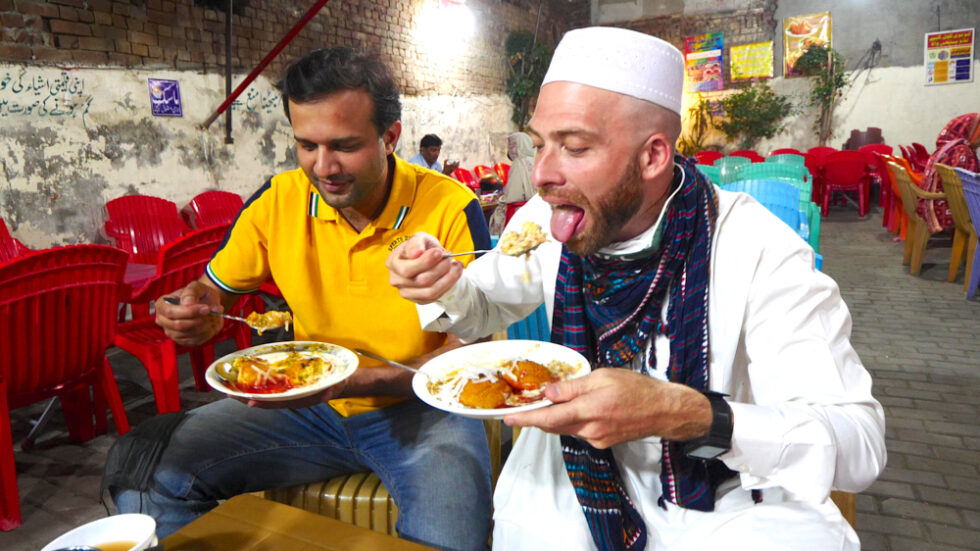
It wasn’t all sweet, though. The chutneys added a bit of sourness, and the black pepper in the fritter gave it a kick of heat as well. It had a light, crumbly texture and is one of my favorite dishes I tried in Lahore! It’s one of the top things to do in Lahore, Pakistan for a reason!

One of my favorite things about traveling through South Asia is how fresh the food is. Unlike the frozen, packaged meat you get in the U.S., you don’t really get that in Pakistan. That’s obvious when you go to Butt Karahi, a restaurant in Lahore with cages of roosters outside.
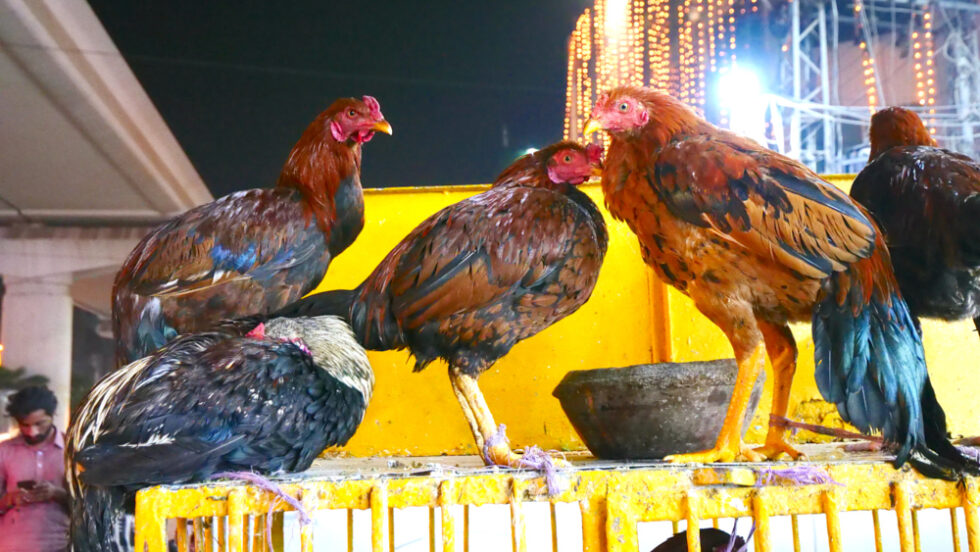
Butt Karahi is famous for their rooster karahi, an incredible chicken dish that’s cooked and served in a giant pan. You choose the rooster you want, and they kill and butcher it and use it in the dish. Place your order and then head over to the nearby overpass, where you might come across a gentleman who offers incredible massages!
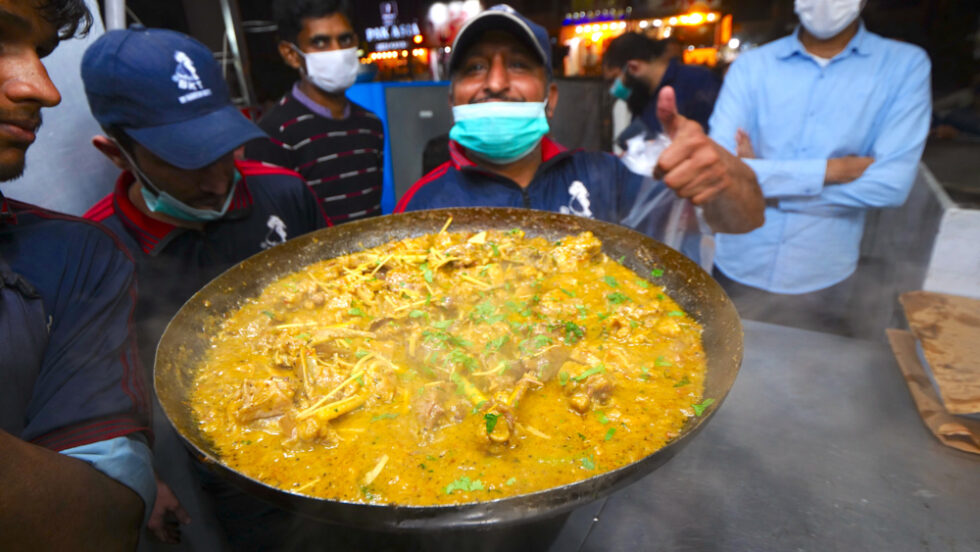
The karahi is full of meaty chunks of chicken, earthy organs, and a rich, buttery gravy. This one didn’t contain tomatoes, unlike other varieties I’d tried on my trip. It also contained lots of bones, so I suggest being very careful as you dig in with your naan.
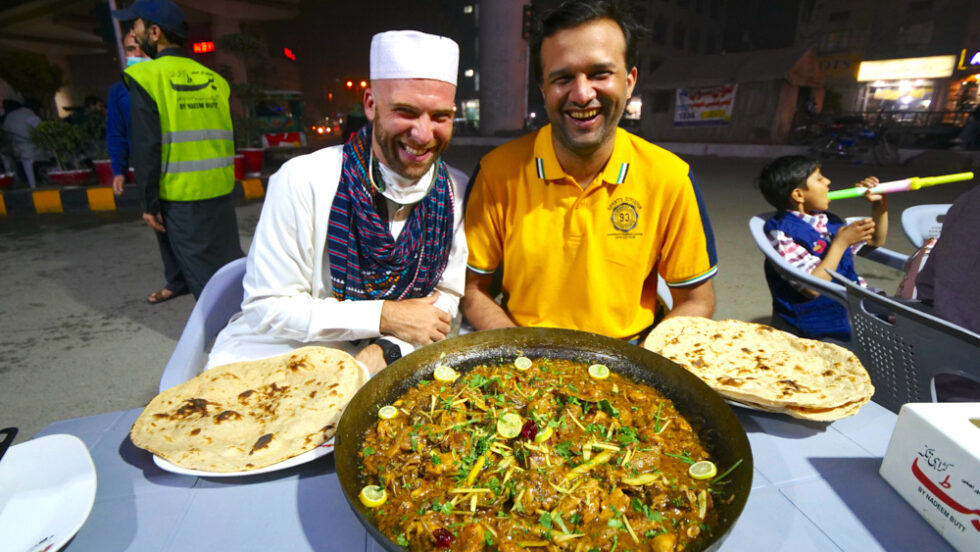
Bones aside, the mix of butter, gravy, organs, and meat was otherworldly. The liver and stomach, in particular, were fantastic. The addition of ginger added a ton of flavor that had my mouth watering for the rest of the night! If you’ve never had karahi, it’s one of the best things to do during your time in Lahore, Pakistan. It’s excellent!

Another of Lahore’s famous snacks is the butt samosa at Butt Sweets and Bakers. Samosas are essentially small, savory pastries that are usually filled with potatoes, spices, and other vegetables, although varieties containing meat also exist.

The butt samosas at Butt Sweets and Bakers, however, are much larger than a typical samosa. They’re huge and crispy on the outside with a doughier texture on the inside. The aloo, or potatoes, in the middle are nice and savory. It contrasts well with the sweet and sour fruit chutneys.
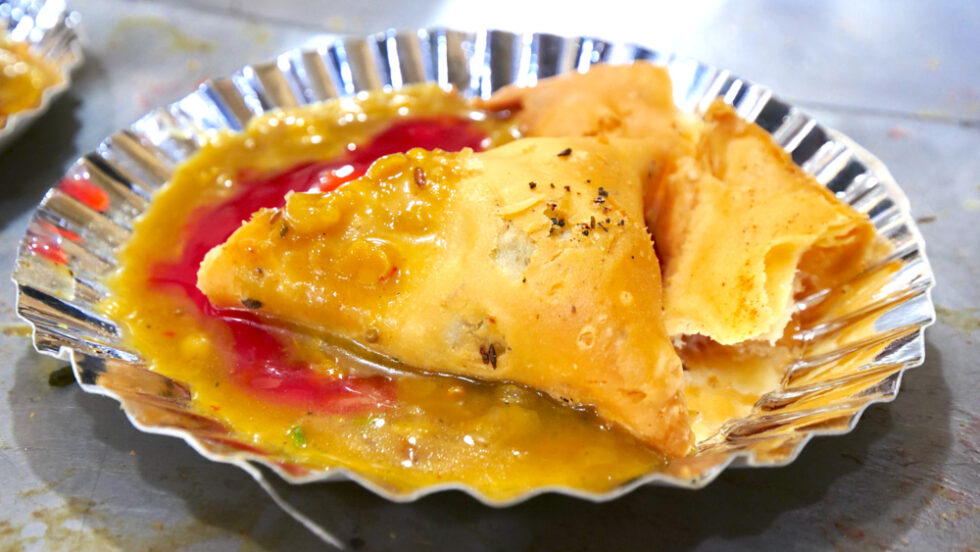
Between the textures and flavor combinations, it’s probably my favorite samosa I’ve ever eaten. It should be on everyone’s list of things to do in Lahore, Pakistan!

On my final night in Lahore, I went all-out with an epic food tour. My guides Rashid, Adeel, and Adil began at Xa-Owng Chinese Restaurant to eat some incredible chow mein, and ended at Dera Restaurant. At Dera, we dined on their outdoor terrace while listening to live musicians.

The chill, relaxing atmosphere was perfect for the food, which included lamb rice; mutton karahi; and plain, garlic, and flaxseed naans. The lamb rice was made with tender yellow rice, raisins, and juicy chunks of lamb. Adding raita made it creamy!

But by far, the mutton karahi was one of the best dishes I ate in Lahore. It was tender, oily, and full of flavor without being super spicy. And while I thought the rooster karahi I’d had at Butt Karahi was a bit better, this dish was still phenomenal. In general, mutton is one of my favorite meats, and this mutton karahi did not disappoint!
Dera Restaurant
23 Abul Hassan Isfahani Road
Block C Faisal Town
Lahore, Punjab
Pakistan
+924235202786

Another of Lahore’s iconic food establishments, Hameed Bun Plaster is a local favorite for a very good reason. It’s essentially a local burger shop that sells lentil fritters called shami kebabs and a type of egg sandwich called bun plaster.

The bun plasters are fried egg sandwiches cooked on a grill that also include a shami kabab, butter, salt, and pepper. As a big fan of egg sandwiches, this one was one of the best I’ve ever had.
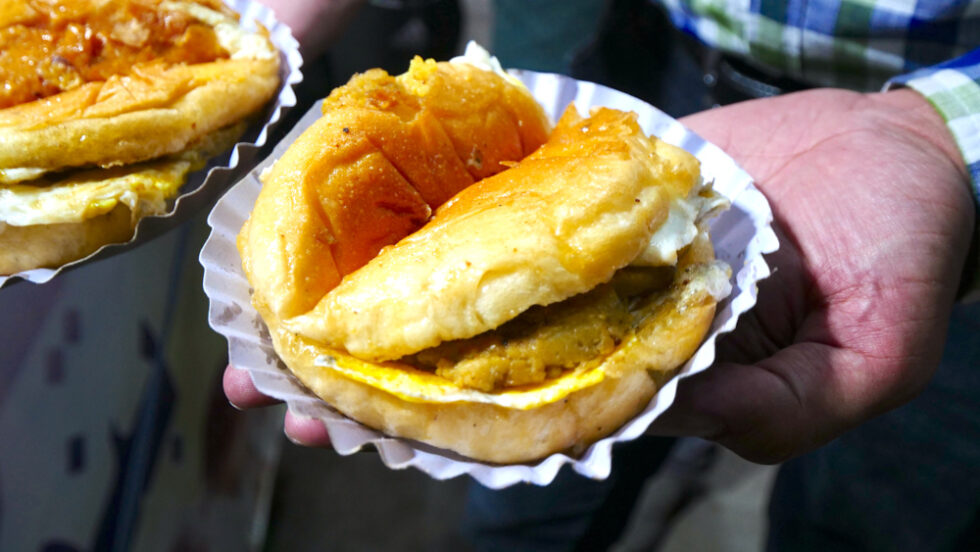
I loved the fluffy, buttery bun. The salt and pepper were just perfect, and the soft shami kabab added a whole new element that I liked very much. Although I ate it in the evening, it would make for a great breakfast! Trying some should definitely be on anyone’s list of things to do in Lahore, Pakistan!
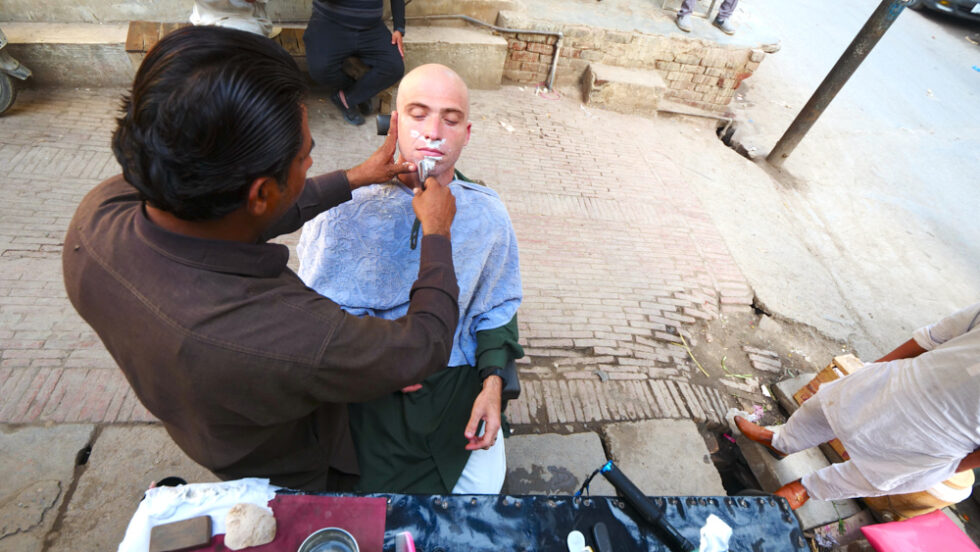
During my time in the Walled City of Lahore, my guides and I came across a street barber. The barbers in Pakistan and India are legendary for their skill, not only as barbers but also as masseurs. I’ve enjoyed many haircuts, shaves, and massages from them over the years, but this was my first time getting a shave in an alleyway!

Most impressively, my barber only had two fingers on one of his hands. But that didn’t stop him from doing an incredible job. After he expertly shaved my head and face, he gave me a quick face massage.

He followed that with a body massage, starting on my shoulders and neck and then doing my eyebrows and arms. He was so thorough, he even massaged my hands and individual fingers. It was the ultimate tension reliever! If you’re ever in need of some pampering in the walled city, being massaged by this guy is one of the best things to do in Lahore, Pakistan!

To put it simply, Lahore was everything I hoped it would be and so much more. Throughout my trip through Pakistan, my guides constantly built it up as an incredible, mind-blowing center for food, history, and culture. It did not disappoint one bit. But none of it would have mattered much without the people. The locals are unfailingly kind and hospitable and made my time in Lahore something I will never forget. Book a trip today to explore the top things to do in Lahore, Pakistan very soon!
NOTE: If you need to check the visa requirements of a particular country, click here. To apply for a visa, find up-to-date visa information for different countries, and calculate the cost of a particular visa, click here!
Counter
101 Countries • 1432 Cities